
CERT RESPONDER MAGAZINE ® PUBLIC SAFETY STAYING SAFE IN A Spring 2018 DISASTER RESPONSE TEAM Humane Society of Missouri TORNADO DIVER
CHOOSES THE TIME YOU Real Life Tactical Casualty Care
SURVIVAL

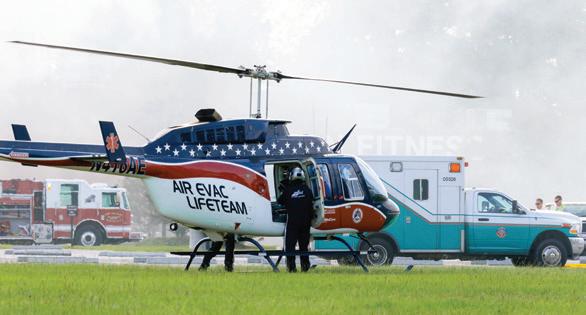


Mission:

CERT Responder Magazine is dedicated to providing CERT and first responders with information and tools to assist communities in times of crisis, as well as offering a platform for responders to share their stories.
Staff
PUBLISHERS: Bob Abrams, Fran Sherman Chris Wahoski
CONTRIBUTING WRITERS: Samantha Henley, Jeane Jae, WhitneyLee, Mike Reeves Simon Pereira Shorey, Linda Spall, Chris Wahoski
EDITOR/CREATIVE DIRECTOR: Fran Sherman
DIRECTOR OF MARKETING: Bob Abrams
OFFICE MANAGER: Chris Wahoski

06 23 18 30 31 18 05 10 11 12 14 34 Departments Disaster Response Team
Inside Features
The Time Chooses YOU Tactical Casualty Care Staying Safe In A Tornado Young Hero: Halie Young Humane Society of Missouri Disaster Response Team Public Safety Diver Survival ®CERT Responder All rights reserved. Photocopying, reproduction, or quotation strictly prohibited without written consent from the editor or editorial committee. Unsolicited material and/or correspondence cannot be acknowledged or returned, and becomes the property of the CERT Responder. The purpose of this publication is to provide a quality publication that educates, informs and connects the CERT and first responder community in the time of crisis, as well as offering a platform for responders to share their stories. To provide comments about CERT Responder Magazine, contact chris@certresponder.com. Product Spotlights Book Review Why Knot? Teen CERT CERT Spotlight Marketplace Humane Society Missouriof The official publication of CERT Responder Magazine, LLC. CERT Responder Magazine 629 Salt Lick Rd St. Peters, MO 63376 www.certresponder.com To contact to editor Fran Sherman, send email to fransherman@ sbcglobal.net. 16 SUBMIT YOUR STORY: certstories@certresponder.com ADVERTISE: advertise@certresponder.com SUBSCRIBE
CERT and ARES A Partnership Which is Meant to be!
to CERT Responder: www.certresponder.com/subscribe
Letter from CERT Responder Magazine
As we start our second year of CERT Responder Magazine, we are happy to let everyone know that the magazine is quickly becoming the go-to place for the latest information and trends in the world of CERT.
This year you can expect many improvements and more information. But part of this starts with you and your teams.
We would like you to share your upcoming classes and events with other teams throughout the US through CERT Responder Magazine This will give greater exposure to your message, as well as provide new resources to others.
In addition, we are starting a “letters to the editor” section. Your participation is strongly encouraged. It offers you a place to express your feelings about content and to give us feedback as we try to meet your CERT-related needs.
Finally, we are offering a section where you can share pictures that would be of interest to the CERT community, and if you show a picture of your team with CERT Responder Magazine, if chosen, we will send you a small gift showing our appreciation. (you must be a subscriber to participate).
Remember to visit our website (www.certresponder.com) and like us on Facebook (cert responder magazine).
We look forward to your input.
Sincerely,
The CERT Responder Magazine Team
4 CERT Responder Magazine
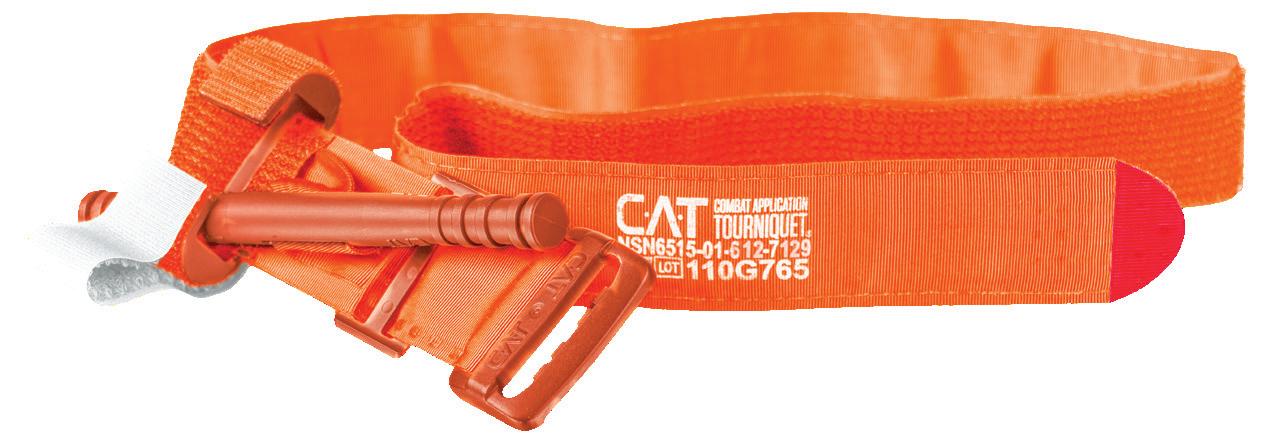

• Store and deploy equipment essential to your mission, whether it’s disaster response, training or promoting your CERT
• Every trailer package is custom built to match your needs: many sizes, load capacities and door options available
• Trailer packages delivered with supplies secured on-board/equipment installed
• Ideal platform to store and deploy portable scene lighting, medical responder kits, search & rescue supplies, communications gear, Quick Shelter canopies, food and water
• Built-in lighting, on-board generators and HVAC available

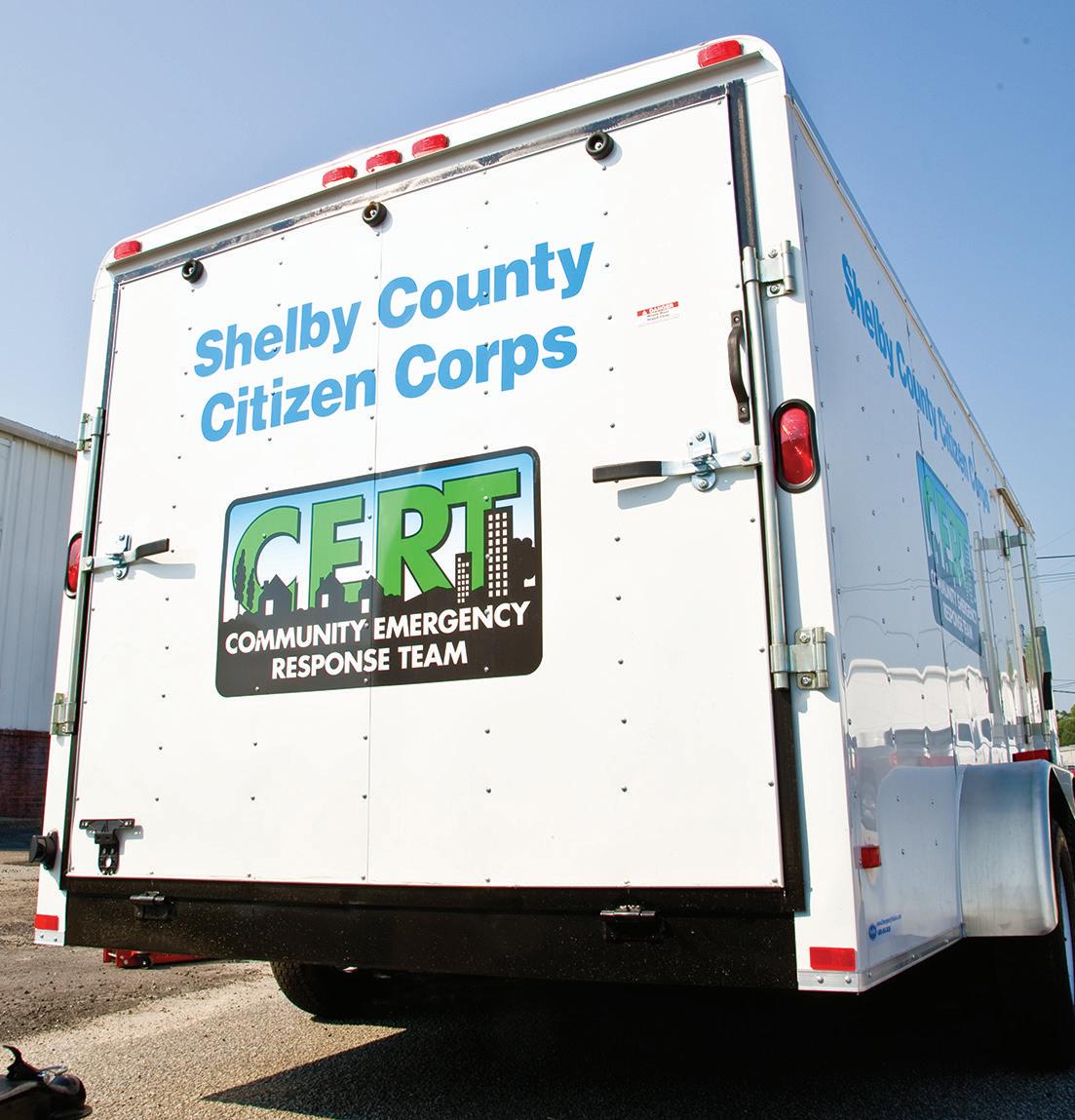
Put Supplies on the Scene PRODUCT NEWS
ProPac CERT Trailers
Learn
propacusa.com/trailers
specialists
ProPac:
more at
or call the emergency trailer
at
1-800-345-3036
® ® INCREASE Survivability Trust the Fastest, Safest, Most Effective Prehospital Field Tourniquet... REV020918
Photo courtesy of
SAFE TORNADO staying in a
BY CHRIS WAHOSKI
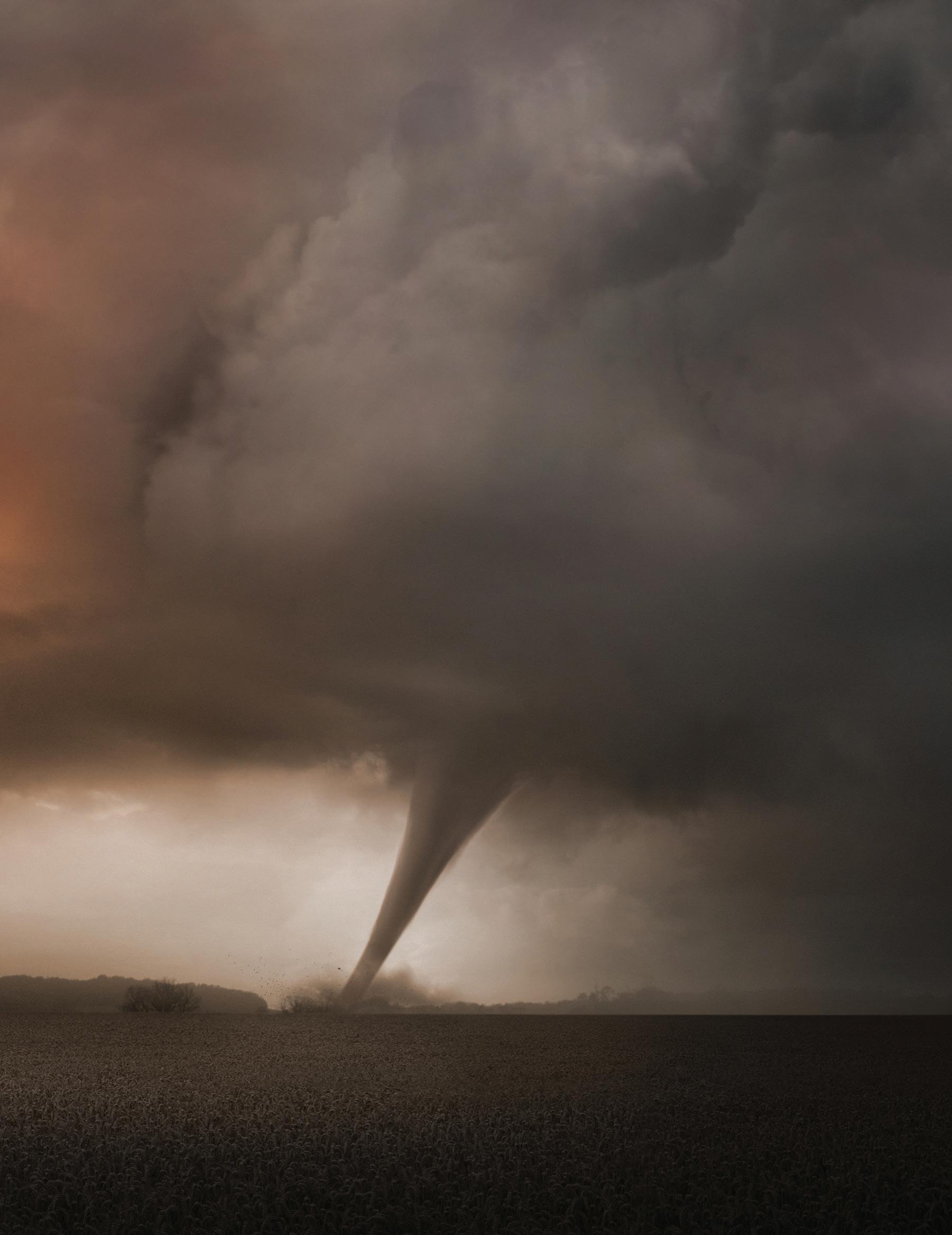
There are about 1200 tornadoes that hit the United States every year during the spring and summer months.
WHAT
IS
THE DIFFERENCE
BETWEEN A TORNADO WATCH AND A TORNADO WARNING ALERT FROM THE NATIONAL WEATHER SERVICE FOR YOUR LOCAL CITY OR TOWN?
A Tornado watch occurs when tornadoes are possible due to the warning signs of severe weather approaching. Remain alert for the storm to hit, and have a shelter that is safe nearby, such as a building or school. There are many apps on your phone such as NOAA or NOAA Weather Radio, and your local television stations for information to let you know if you should seek shelter.
A Tornado warning is a sighting of a nearby tornado. You should take shelter immediately. Most injuries will occur from flying debris or large hail that can render you unconscious. Loud roars that
sound like a freight train from the whistling wind, along with dark greenish sky, should be a key indicator that danger is upon you and very close.
There are about 1200 tornadoes that hit the United States every year during the spring and summer months. The Midwest region has seen its fair share of tornadoes with most tornadoes being in the central and southern states, including the Gulf Coast and Florida.
HOW DO YOU PREPARE BEFORE AND DURING A TORNADO?
Protect and prepare your family, your pets, and your home in case of disaster. If you find yourself in a school, hospital, or shopping center, then most of these locations will have a safety plan in place in case a tornado is imminent. Listen for instructions, and get to a safe


location where you can cover your head and protect yourself in case the roof gets blown in or comes off the building. If you are at home, this should be a room at the lowest level without windows—a basement or storm cellar is best. If you have windows, then the bathtub or closet in an interior hallway or room would be the next best place. Whatever you do, stay away from outside walls, doors, and windows. The more walls between you and the storm, the safer you are going to be. If you are in a manufactured home or mobile home, go to a pre-identified location, such as the lowest floor or storm shelter. Even if the mobile home is tied down, it doesn’t offer any protection. If you find yourself outside in your vehicle, then get to a sturdy building and stay put because you will not be able to outrun traffic and a tornado without

CERTResponder.com 7

If you find yourself outside in your vehicle, then get to a sturdy building and stay put because you will not be able to outrun traffic and a tornado without endangering other lives including yours.
endangering other lives including yours. Flying debris causes most fatalities and injuries.
Building a safe room or safe shelter that is anchored to the ground is another option because they won’t turn over in a tornado or hurricane. Just because your home is secured and meets local codes does not mean you’re safe.
THE AFTERMATH
What do you do if you find yourself involved in a tornado and become a trapped victim? The best thing you can do is stay in one place by tapping on a pipe, metal, or something that rescuers can hear. Hopefully, CERT members and rescue teams deploy K-9 units to help locate everyone safely. You don’t want to necessarily use your energy to kick up dust and debris if you are in a limited space, because your breathing can become inhibited, and might cause respiratory problems. Instead, start using social media—your phone is always near your side when you’re on Facebook, so why not have it during a disaster? Having protective clothing such as long pants and stable shoes with soles on your feet
is going to be your best friend, since most of the house may be blown away.


If you are part of the rescue operations as a CERT member, then your “GO BAG” will hopefully be with you in the shelter along with some portable food, lighting, and extra batteries. Also, a good pair of gloves and glasses will help protect you, should you need to dig through the debris. Your 4 in 1 emergency tool can prove very useful—these are made of tough, heat-treated alloy. They won’t spark—they won’t rust. They will shut off gas and water, and allow you to pry open doors and digs through debris. A can of spray paint is another tool to mark locations. A Hi-Vis ANSI Vest will enable others to see you in the middle of the day or during night operations.
Let your friends know you are safe and register with a “safe and well” website if possible, but remember, WIFI and cell towers might be out of commission after the tornado strikes. It might be difficult to reach your loved ones by phone because everyone else is also calling their family, so you might get a busy signal. Have a plan in place with your family in case of an emergency to make sure everyone gets home safely. CERT
8 CERT Responder Magazine


CERT TEAM TRAINING Call us today! TEAM TRAINING • CERT Training Classes • EMT & Paramedic Continuing Education • Bleeding Control (B-CON) Program Offered Critical One EMS Academy 629 Salt Lick Rd. St. Peters, MO 63376 636-387-7150 Info@CriticalOneEmsAcademy.com www.CriticalOneEmsAcademy.com CALL US TODAY! CERT
Spam Nation
The Inside Story of Organized Cybercrime
BY BRIAN KREBS
Published by Sourcebooks 2014
Remember when our email addresses were inundated with Viagra solicitations? Or perhaps the “Get your drugs cheaper in Canada”? About 12 years ago,I was indiscriminately bombarded with spam that didn’t apply to me whatsoever. I didn’t need male or female enhancements, prescription drugs cheaper or pictures of beautiful Asian ladies. How did they get my email address? Who are these people who were targeting me? What did I do on my computer to have my email address out in the public realm? How did they find me?!
Brian Krebs’ book explains it all! His writing is surprisingly easy to read and comprehend. He takes us into a world of international racketeering,what it takes to find the culprits,their attitudes, education and rationale. I am not computer savvy when it comes to terminology or understanding why when I press “send”, my email sends, but Mr. Krebs writes in such a way that even I grasped words and was willingly absorbed into the world of cybercrime!
Krebs was a reporter for the Washington Post from 1995 to 2009. His job was to cover Internet security, and cybercrime and technology policy. He’s the guy who broke the Target breach story.

Criminals stole forty million credit and debit card numbers from Target and sold them online. The breach began with a spam email sent to a heating and air conditioning vendor that worked with Target and had access to a section of Target’s network. The email had malicious software attached and thus found a way to break into Target’s network.
Reading Spam Nation blows your mind as to what can occur, how it happens, and who the perpetrators can be. Government, politics, ruthless criminals, or perhaps the 17-year-old next door knows how to code, create a worm, see your friends, and their contact info. Hackers can, of course, be of any nationality. In this particular saga, written well before the 2016 Presidential election, the offenders happen to be Russian which makes the story even more intriguing.
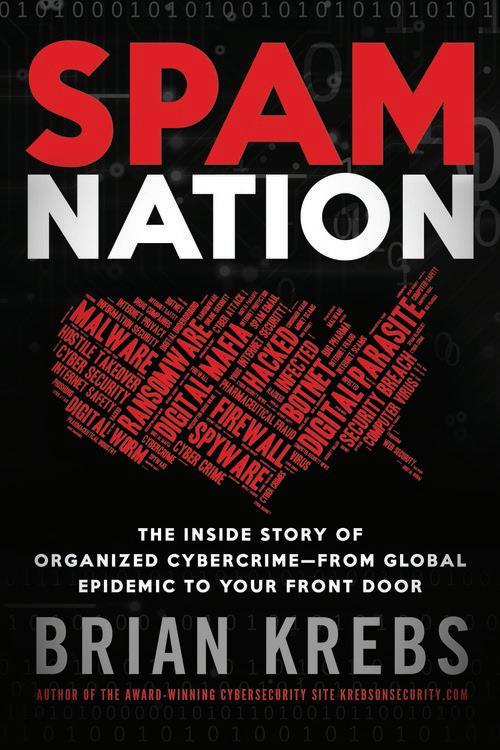

Along with the personalities, danger, threats and subsequent results, Krebs explains our vulnerability, why Americans are targeted (especially regarding pharmaceuticals) and most importantly how to safeguard our information as best we can.
Thank you Mr. Krebs. I would love to see a follow up soon!
FYI. you can see his blog at www.krebsonsecurity.com and keep updated with the latest in threats, investigations, and prevention! CERT
10 CERT Responder Magazine BOOK REVIEW
BOOK REVIEW WRITTEN BY LINDA SPALL
Brian Krebs

• Joining two ropes together
• Extending rope length by fastening two ropes together
• Climbing, arboriculture, and search and rescue

INSTRUCTIONS
1. Place two ropes parallel on another.
2. Using one rope, make a loop by passing it over the second rope then under both ropes. Do this twice (that’s why it’s called double fisherman’s knot)
3. From underneath the two ropes insert it into the loop you just made.
4. Do the same with the other rope
5. Pull both ropes to tighten the knot.




CERTResponder.com 11

THE BENEFITS OF
TEEN CERT
up and beyond your standard “emergency preparedness” training
BY WHITNEY LEE, MONTEREY COUNTY, CA
There are the obvious benefits of taking a TEEN CERT class, such as learning about planning, preparing and responding to disaster situations, helping themselves, their families, coworkers, and neighbors in the event of a crisis in their community.
12 CERT Responder Magazine
One program based in St. Charles County, MO is Mid America TEEN CERT. Mid America was started in 2003, and officially established with FEMA in August of 2007. In April 2008, BSA executives from the Greater St. Louis Area Council requested the assistance of Mid America TEEN CERT to help pilot a more advanced emergency preparedness training program as part of a joint Boy Scouts of America/US Department of Homeland Security initiative called “Emergency Preparedness BSA” for the BSA’s 100th anniversary.
In early 2017, Mid America was honored as the No. 1 Emergency Preparedness Program and Youth Program in Missouri for the sixth straight year. This past spring, MATC achieved the recognition as No. 1 Emergency Preparedness Training Program and Outstanding Youth Training Program in America for the third straight year. MATC also attained an Honorable Mention for Outstanding Community Initiatives and PrepareAthon in Action.
MATC has enhanced the nationally-recognized core CERT curriculum, by adding the requirements of several Boy Scout merit badges, including Emergency Preparedness, First Aid, Fire Safety, Safety, Disabilities Awareness, Search & Rescue, and Wilderness Survival. Requirements for Girl Scouts, 4H, and American Heritage Girls badges have also been incorporated within the training.
Another unique quality of Mid America TEEN CERT is that the program does not just teach to underage students; most teen CERT pro grams are just that – for teens. MATC trains any student who is at least 12 years old through adulthood. Roughly 35% of their graduates are adults.
Beyond taking the basic training, the program also provides support for many charitable organizations and events, such as pro viding primary medical

support for events such as the Komen St. Louis Race for the Cure, YWCA Walk a Mile in Her Shoes, USO 5k Mud Run, The Battlegrounds Mud Run, and Rock ‘n’ Roll Marathon benefiting St. Jude Children’s Research Hospital.
The popularity of the program has spread into other counties, cities, states, that request the Mid America TEEN CERT course. This November, CERV (Community Emergency Response Volunteers) of the Monterey Peninsula in California hosted MATC to train the county’s first ever community emergency response training for teenagers. Students and instructors from 13 different zip codes within in the Monterey County community took the course.
“I think the class went exceptionally well,” said Harvey Pressman, president of the CERV advisory council. “The hands-on ‘test disaster exercise’ at the end was particularly impactful.”
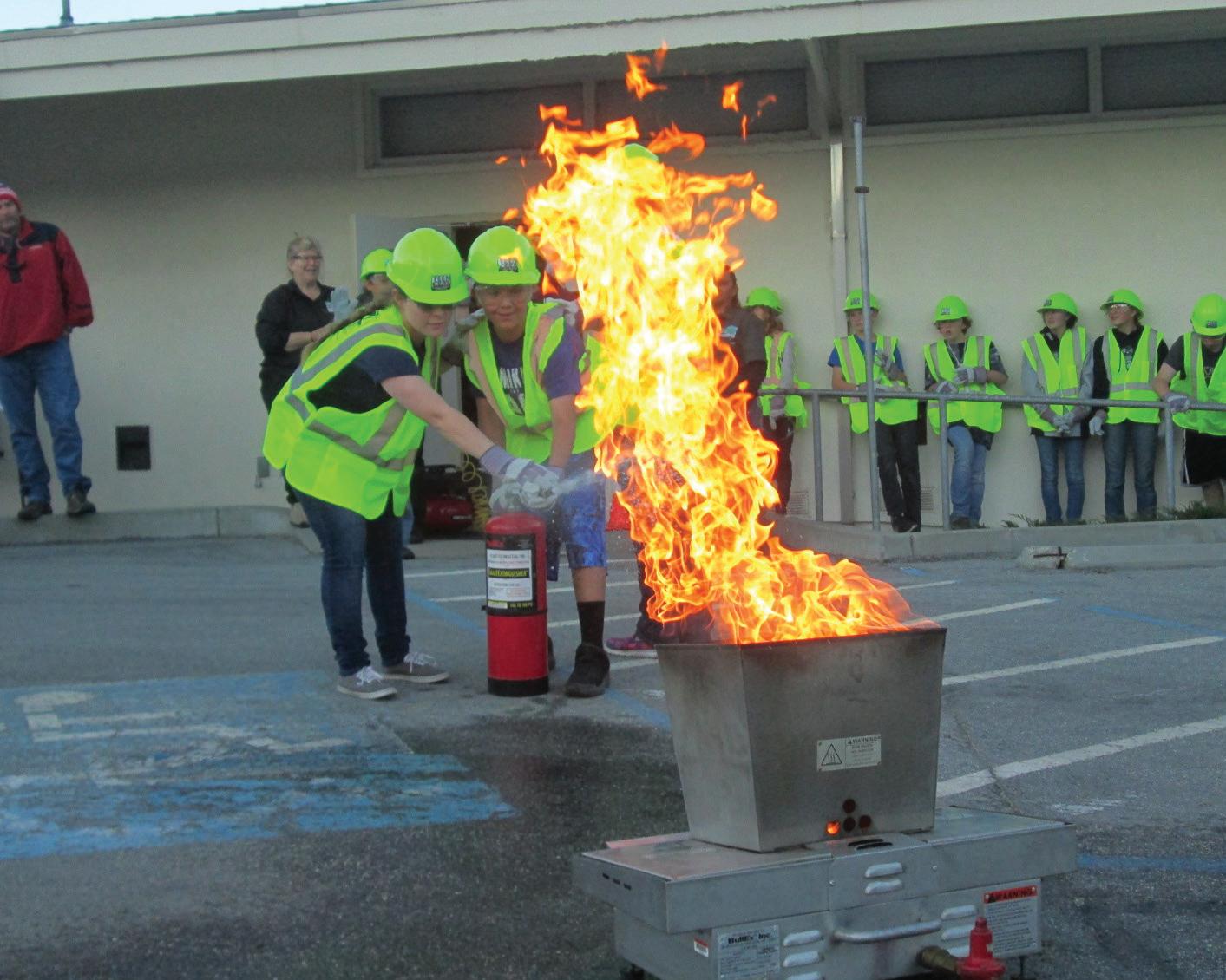
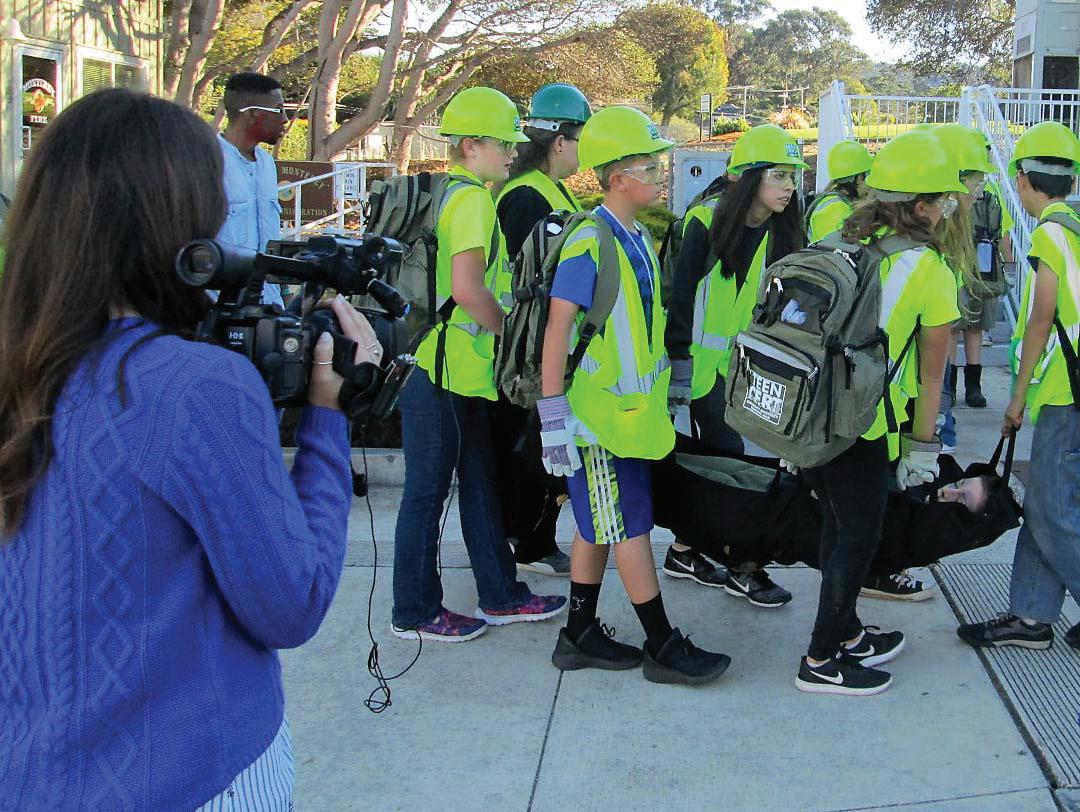
CERTResponder.com 13
This past spring, MATC achieved the recognition as No. 1 Emergency Preparedness Training Program and Outstanding Youth Training Program in America for the third straight year. For more information about upcoming TEEN CERT classes or the MATC program, visit www.facebook.com/groups/MIDAMERICATEENCERT/.
CERT SPOTLIGHTS

Focus On
Phil Amtower
Emergency Management Director of CHRISTIAN COUNTY, MISSOURI and the Task Force Leader for MO CERT 1
Phil Amtower currently serves at the Emergency Management Director of Christian County, Missouri and the Task Force Leader for MO CERT 1.
Before Mr. Amtower became the Director of Emergency Management, he served as a volunteer firefighter. Mr. Amtower was appointed as Director in January, 1997 by the County Commission. Since then, he has directed the response to 9 Presidentially Declared disasters.
Mr. Amtower started the local county volunteer C.E.R.T. (Community Emergency Response Team) team in 2003 and has since trained over 1,300 people in program. After seeing several large destructive events in the region, Mr. Amtower saw the need to form the regional CERT group called MO CERT 1. The basic premise was to harness a stronger response group that would bring more assets and personnel into a regionally deployable team that would be available to response to a variety of events.
The MO CERT 1 team has been deployed to: Joplin, MO; Moore, OK; Baxter Springs, KS; Quapaw, OK and Branson, MO. The team has a FEMA Type III S&R Team as well as a FEMA Type III Mass Care Team in place. In 2014 MOCERT1 was awarded the FEMA Individual and
Community Preparedness Award for Outstanding Community Response Team Initiatives. Also in 2014 Phil Amtower received the Presidential White House Award for Champion of Change for his service in Emergency Management
JOB DESCRIPTION:
This is a high-level management position overseeing a major County office. Under the County Commission’s direction, the Emergency Management Director oversees the Office of Emergency Management and all matters related to emergency preparedness, mitigation, and recovery The Director will serve as the senior advisor to the County Commission.
This position is responsible for: developing and articulating the County’s key policies, positions and strategies for dealing with emergencies; interpreting and applying state and federal legal requirements; implementing, coordinating, and enforcing policies across multiple County bureaus; overseeing the development, implementation and evaluation of the County’s emergency preparedness program; executing interagency agreements; conducting training; and analyzing effective disaster management services. Additionally, the Director evaluates, improves, and promotes the County’s comprehensive disaster planning efforts; prepares and administers the annual Emergency Operations Management budgets; and coordinates local and national relationships.
WHAT IS THE BEST PART ABOUT YOUR JOB?
I guess it would be the fact that we have the ability to help people. You can go to bed at night and know that you have made a difference in someone else’s life. It doesn’t happen every day, but most of what we do on the day to day basis, is getting ready to make that difference.
WHAT DO YOU CONSIDER YOUR GREATEST ACCOMPLISHMENT?
I’ve had quite a few pretty “monumental” accomplishments in the performance of my job…at least I think so. But, I think the greatest one would be managing to stay married to my lovely wife for almost 25 years and raising 3 pretty good kids. I am quite proud of them!!
WHAT DO YOU DO FOR FUN?
Fly fishing, hunting and a little woodworking. If I am nowhere to be found, I am probably some where throwing flies at trout….
HOW
CAN THE PUBLIC SAY “THANK YOU” AND MAKE YOUR WORK EASIER?
By preparing for disasters and emergencies! If everyone had insurance, had a family plan and maintained good situation awareness….I wouldn’t have anything to do and could FISH a lot more!!! CERT
14 CERT Responder Magazine
CONNECT YOUR TEAMS
Send messages to all your responders, via call or text, instantly. Visit try.call-em-all.com/CERT to setup your free account.
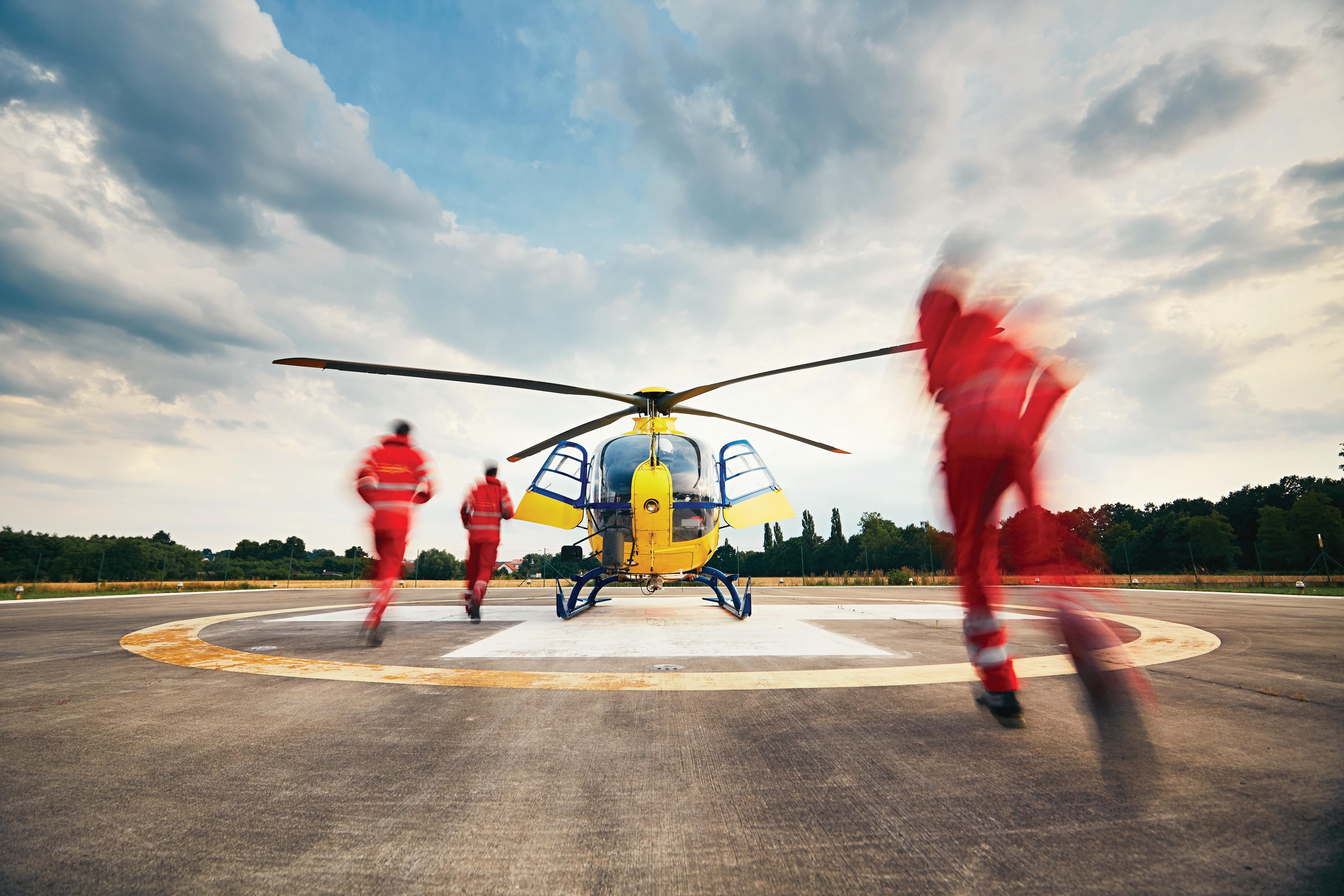
COMMUNICATE IMPORTANT MESSAGES
Update team on urgent issues
Determine availability of team
Emergency notifications
Call us at 877-226-3080 to learn more or get started for free below. try.call-em-all.com/CERT
Coordinate during disasters
Training reminders
Recorded voice or text messages
CERTResponder.com 15

YoungHalie Young, TEEN CERT
HERO
MBY LINDA SPALL
iddle and High School isn’t easy. Peer pressure, teacher’s assignments, the future, the relationships with friends and relatives, acceptance of others and acceptance of yourself, and making choices can all be mental nightmares. Thinking back, they were not my favorite years. However, maybe had I met 13-year-old Halie Young, I might have felt differently. Halie has an interest and purpose that is awesome. Her passion is helping others. She is now a member of the Mid America Teen Community Emergency Response Team.
In case you are unfamiliar with the organization, TEEN CERT is sponsored by the Federal Emergency Management Agency and made up of volunteers trained in disaster preparedness and emergency response. Training includes a set curriculum ending in a mock disaster where students are tested using their newly-learned skills. The program consists of nine units; each unit has goals and learning objectives and includes lectures, demonstrations, and hands-on practice. The course normally takes approximately 20-30 hours. Teens
are empowered by learning skills that take them outside of themselves. They learn to protect themselves, their family, friends and neighbors, schools, and community. I was able to communicate with Halie and asked what inspired her to take TEEN CERT classes. Her answer was that she has always been into “search and rescue”. She watches medical shows on TV and always tries to help if someone gets hurt. So where did she even gain knowledge of the term “search and rescue”? The answer is in the genes.
Her father is a firefighter. Her mother is a proud supporter helping to make it all happen. Her grandmother, who unbeknownst to me until I heard it from Halie, was the assistant instructor of the TEEN CERT sessions that I attended a year ago! LaFaye Young is an extraordinary, impassioned, non-stop (does she ever get tired?) woman. Not only is she dedicated to TEEN CERT, but LaFaye works for the Red Cross, the USO and she is a rock-star Mrs. Claus at Christmas. Basically, she is a true gift to many, many lives.
16 CERT Responder Magazine
Tony, Keri, Halie and Tucker (age 8)
Halie said that she had been begging her grandma to do a CERT class. At the beginning of this year, Halie was able to join a class along with an American Heritage Girls Troop at a nearby community church in St. Charles County, Missouri.
“They were amazing! I was not a part of the group, but they were amazing with having me come. The girls and I got along really well. The teachers were amazing as well.” Halie added.
The feelings are mutual. Mark Rosenblum is the Program Director for the Mid-America TEEN CERT. He travels around the country promoting teaching and guest speaking on behalf of the organization. His enthusiasm and belief in the program holds students interest, as does his humor and passion, and sharing of his experiences. He was Halie’s group’s instructor and mine as well. I asked him if he remembers Halie.
Mark seemed quite impressed. “Halie did very well and worked closely with the other participants taking the class. She was just one of a few students who were not part of the AHG (American Heritage Girls) troop doing the training, but Halie wasn’t shy about getting in there and working with them as a team!”
Halie’s favorite part of the program was participating in the mock disaster. “It was fun but serious at the same time. The exercise was very real. It seemed like a real disaster. The makeup was so realistic and the actors never broke character. Before we went out and did it, I was terrified. I was shaking and breathing heavy, but as soon as I got in there and started working I was fine.”

Keri is Halie’s mom, and supports the program wholeheartedly. “I can tell you she thoroughly enjoyed the weekend long class and came home with a spiral notebook full of notes. She learned techniques and skills and even showed us a few things such as shutting off the gas in our home and main water lines, explaining to her little brother the color coding ribbons for wounded citizens etc. We are so very proud of her for her eagerness and willingness to learn. Halie is a very grounded young lady who is never quick to panic, and takes actions quickly when issues arise with injuries or incidents.


The training she received will help her continue to be a leader in scary and difficult situations while staying calm and being a forward thinker at the same time.
She is very eager to take more classes and become more involved in the Teen Cert program.”
With today’s constant instant news, including the barrage of crimes, accidents, disasters, issues with aging, threats to the environment, and threats to safety in our homes, schools, and workplaces, we can easily see where the media has changed us. If our worry has increased our feelings of “what if”, then surely our children are exposed as well. We can overcome. By giving our children answers and the tools to help in a given situation, we can bestow the gifts of confidence, self-esteem, and faith in their abilities, as well as compassion, citizenship and the feeling that they are making a difference.
As for Halie, she wants everyone to know how grateful she is to come from such a family.
“I think that is amazing that other teens like me want to try to make the world a better place in natural disasters. I think people need to be ready and prepared for anything that will happen or what could happen in the future. I will know how to help people.”
“I just want to add that this program is amazing, and I would recommend it to anyone, even if you’re not big on medical or anything in the helping field. It is me using experience for everyone. Even parents and adults are allowed to come to the program so don’t be scared! Come and you will have fun!”
For more information on Mid-America TEEN CERT, check out their Facebook page. CERT
CERTResponder.com 17
Grandmother LaFaye Young assists in CERT class
HUMANE SOCIETY OF MISSOURI DISASTER RESPONSE TEAM:
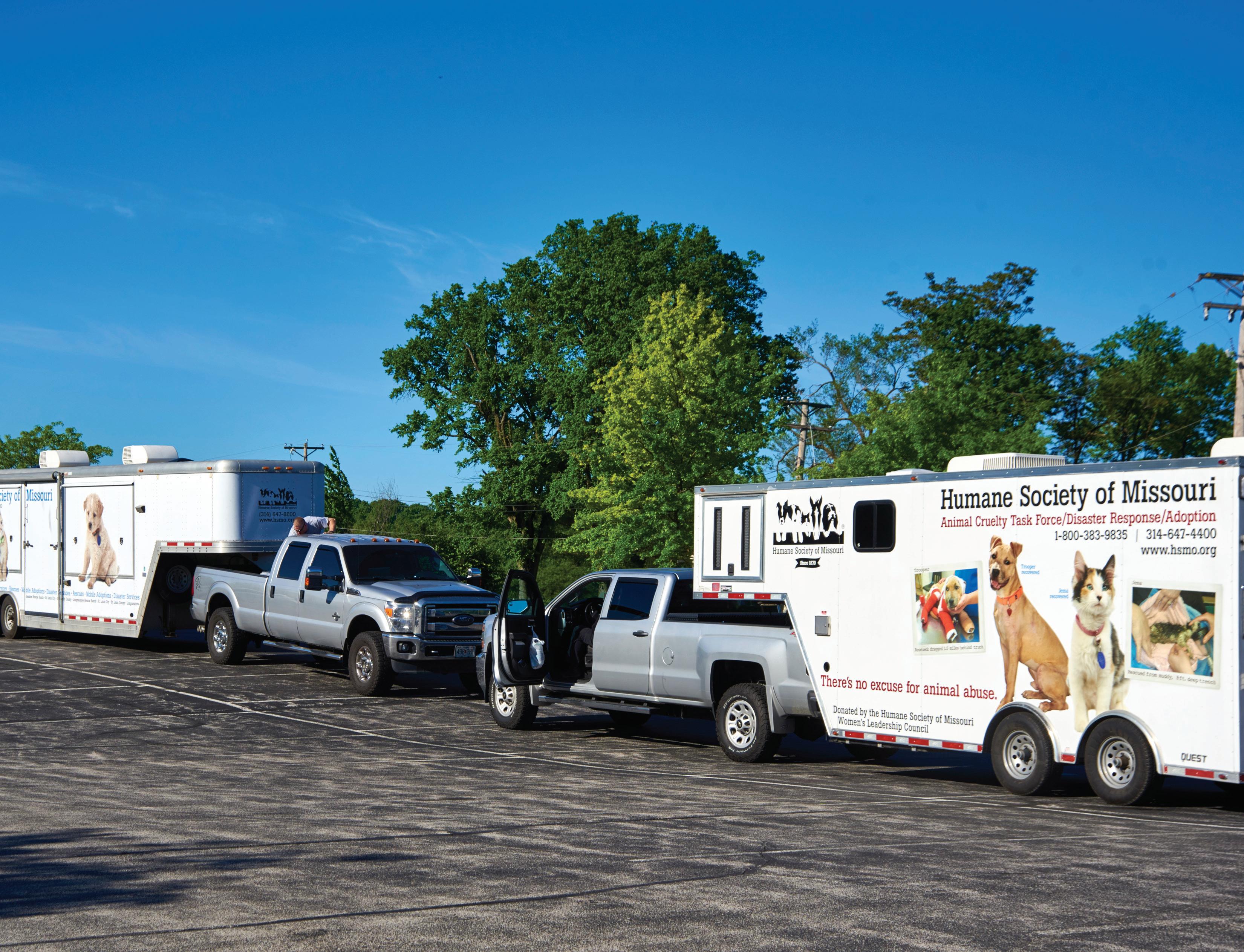
AAt the Ready for Animals in Jeopardy
BY JEANE JAE, VICE PRESIDENT OF COMMUNICATIONS, HUMANE SOCIETY OF MISSOURI
s the water rose around their New Orleans home the night of Hurricane Katrina in 2005, Bobby Alberti and his best friend Rover, an 80-pound black Lab-Dalmation mix, fled to the roof. Fortunately, they survived the storm and flood and were evacuated by helicopter to a temporary shelter. Soon after, Bobby transferred to another shelter but was not allowed to take Rover with him. Rover went to a temporary animal shelter.
To relieve overcrowding in those animal shelters, Rover and 45 other dogs were transported by the Humane Society of Missouri (HSMO) to our St. Louis shelter. Through the determined efforts of his sister and HSMO’s adoption staff and website listing of rescued animals, Bobby and Rover were happily reunited.
HSMO learned, as did many organizations and state governments in the aftermath of Hurricane Katrina, that companion animals as well as livestock must be considered as a vital part of emergency response and rescue operations following a disaster. Many people will put themselves at risk and not evacuate dangerous situations if they cannot take their pets with them.
To prevent further tragedy, the Humane Society of Missouri Disaster Response Team was created to help the thousands of animals affected by Hurricane Katrina and has served since then as
the lead animal welfare agency in Missouri for disaster response. At the request of local and state emergency management agencies, HSMO’s 15-person team responds to natural and man-made emergency situations such as tornados, floods, ice, snow, thunderstorms, earthquakes, fires, chemical spills, explosions, and more.
HSMO Disaster Response Team capabilities include trained staff, a fleet of vehicles and boats, equipment and supplies necessary for full-service rescue, temporary shelter and reunification of animals affected in disasters.
18 CERT Responder Magazine
STAFF
Training for HSMO Disaster Response team members includes courses in swift water rescue, animal search and rescue and technical ropes as well as 8 hours of FEMA Disaster training and 5 hours of ASPCA Pro disaster training. Team members serve as incident commander, PIO, liaison officer, safety officer, shelter operations chief, and animal care staff as well as search and rescue responders in the field.
FLEET
The Humane Society of Missouri’s disaster response fleet includes a variety of vehicles to transport and house pets and people in a variety of challenging circumstances.
• Two, climate-controlled animal transport trailers able to house up to 150 animals
• RV to provide housing for rescue staff
• ATV
• Two rescue boats
• Two horse trailers
• 1,000 gallon water trailer
• Two Sprinters for animal transport
• Equipment trailer with caging, magnum panels
• Heavy-duty trucks
• Animal handling equipment to accommodate a variety of pets including snakes and exotics in a variety of situations
ALWAYS AT THE READY
Whether the request comes from an emergency management agency, law enforcement or another shelter, HSMO’s Disaster Response Team can be ready to deploy across the state or to another state in less than 24 hours.
Immediately after a 2011 EF5 tornado ravaged Joplin, Missouri, HSMO sent a 23-person disaster response team skilled in search and rescue and sheltering to help the animal victims of the storm. “After they gather their families near, the very next thing survivors do is look for their pets because they are family, too,” said Debbie Hill, HSMO’s vice president of Operations. “It is extremely important to be out there quickly because without us, lost, injured and stranded pets could quickly perish.” HSMO team members combed the rubble dawn to dusk searching for animals in distress and providing food and water for those in hiding. At the request of many pet

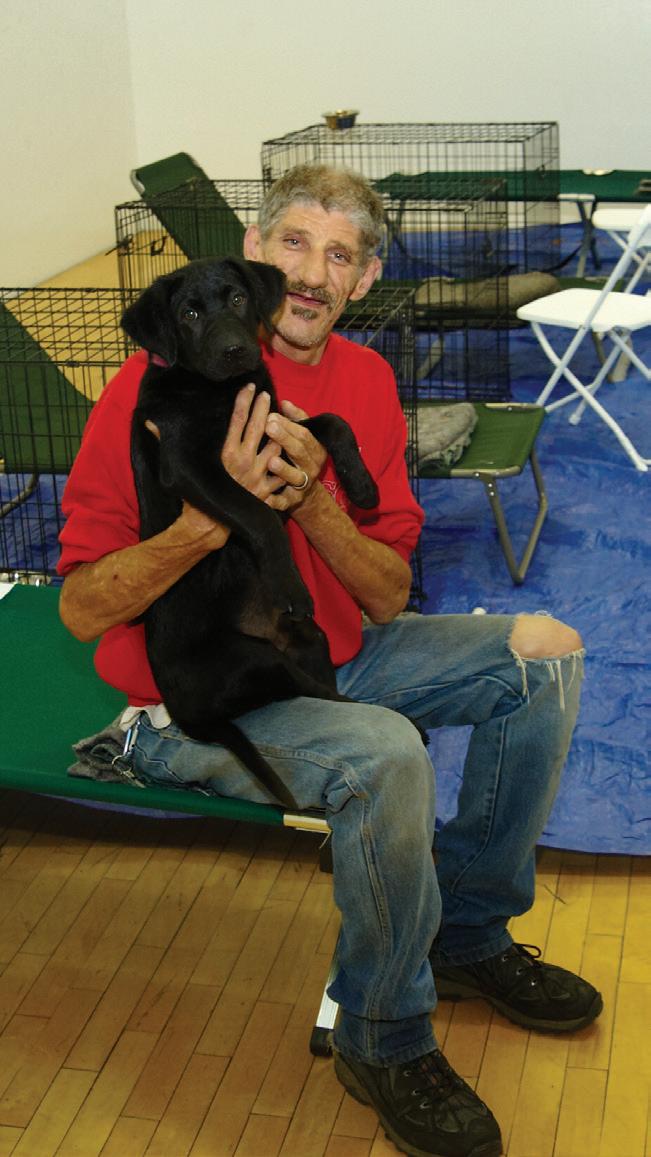
SETTING UP A TEMPORARY PET SHELTER
PREPARE FOR
• Several days to several weeks
• 30 animals with contingency plans to accommodate many more
• All types of household pets from dogs and cats to snakes, lizards and exotics
SITE CONSIDERATIONS
• Location: the closer pet owners and their pets can be housed to each other, the better • Types/ sizes/number of animals to be housed, segregation and isolation needs
• Access to the public and rescue teams
• Proximity to affected areas
• Supply/Feed storage area
FACILITY CONSIDERATIONS
• Climate controlled
• Area that can be secured
• Utility/sanitation access: electricity, HVAC, water, sanitation, trash removal
• Refrigeration
• Copier/printer
SUPPLY NEEDS
• Animal feed, water, first aid supplies, towels/sheets/blankets, cages, bowls, watering cans, enrichment toys, cleaning supplies, documentation: computer, copier, paper documents, office supplies, plastic storage bins
SHELTER SET UP
• Safety for pets and people
• Cage set-up – no stacking, no direct contact between pets, large enough for pet to stand up, turn around, lay down; separate types of pets
• Animal intake/outcome
• Cleaning and sanitation
• Demobilization
CERTResponder.com 19
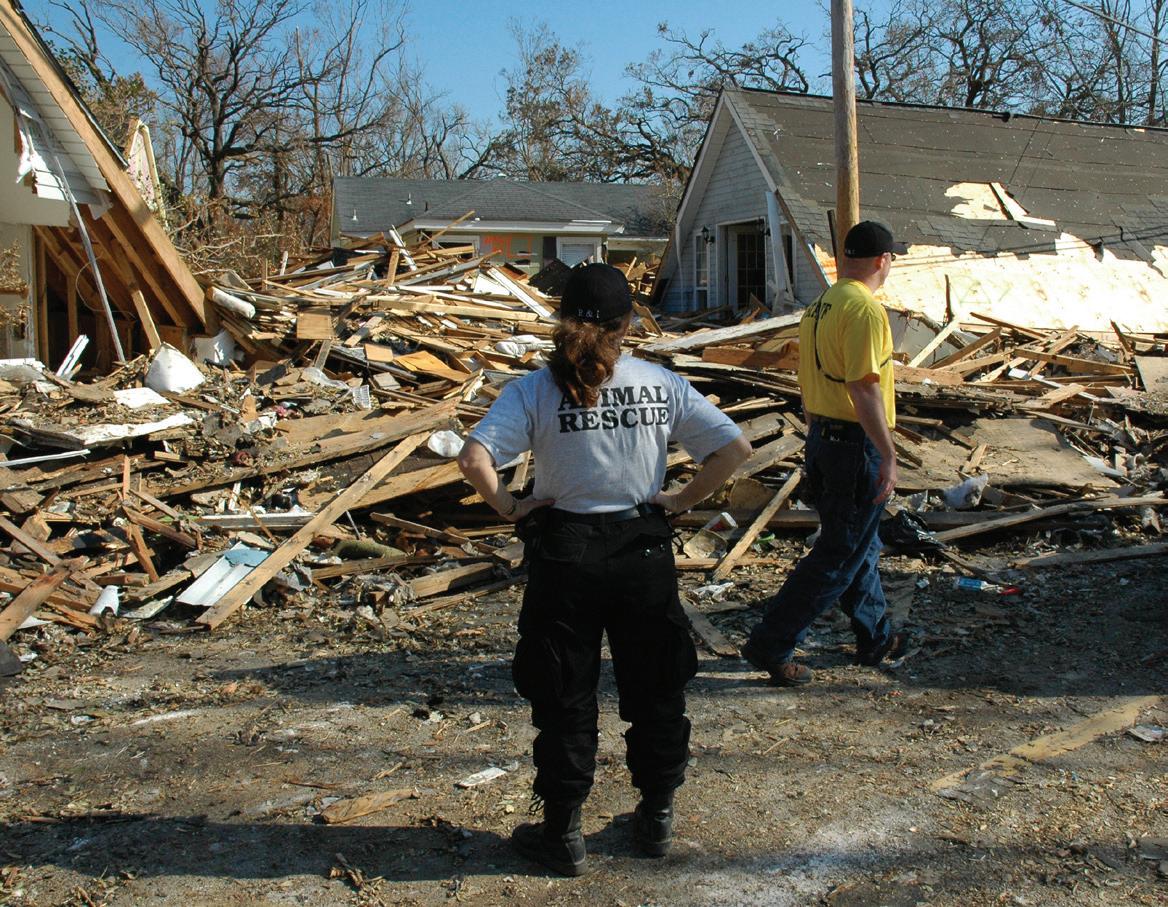
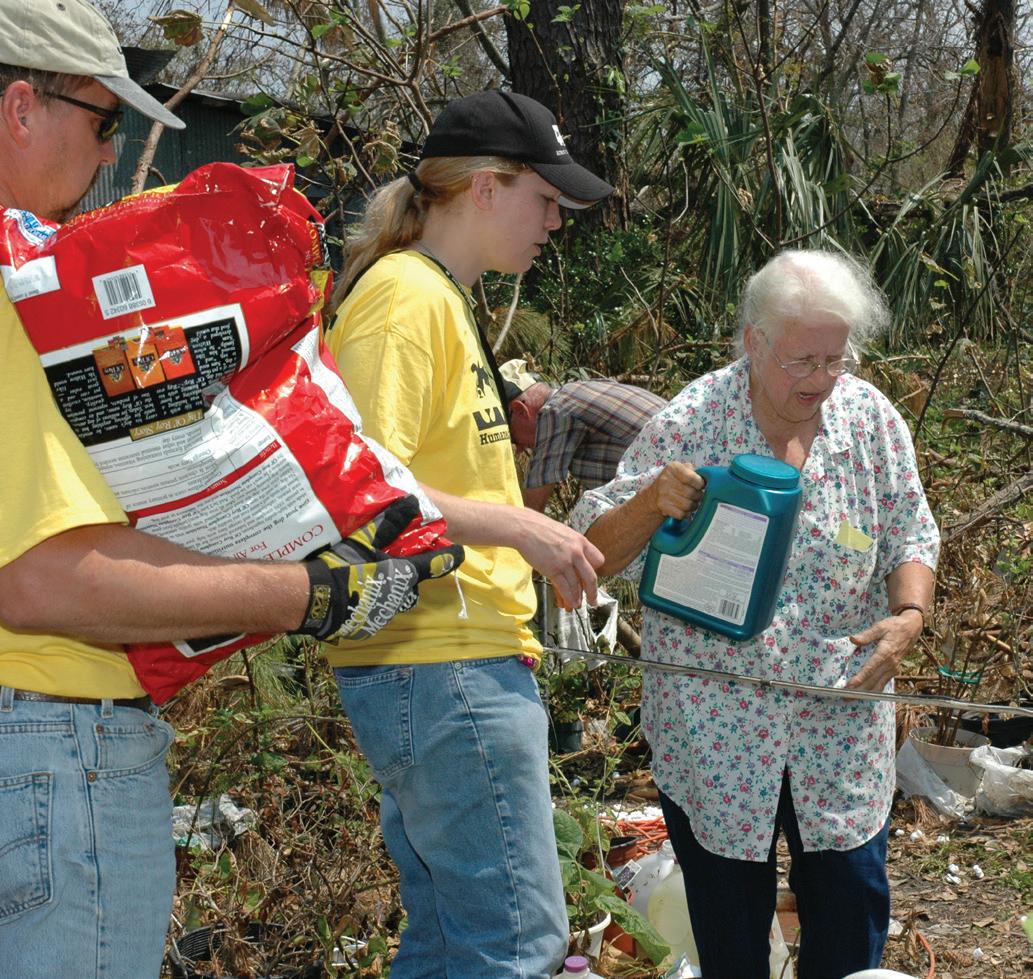
owners, HSMO teams returned to severely damaged homes to retrieve the pets people were forced to leave behind. Working with the American Red Cross and Joplin Animal Control, HSMO also set up and operated a pet shelter in the same building where homeless storm victims were staying so they could be near their pets. (See sidebar.)
Over the years and with the support of individual and corporate donors, HSMO’s Disaster Response Team has been able to rescue, shelter and reunite or rehome, thousands of pets in emergency situations. “With foresight, planning, expert


Many people will put themselves at risk and not evacuate dangerous situations if they cannot take their pets with them.
execution, and generous support, the Humane Society of Missouri is proud we can provide vital services to pets and their grateful owners in times of crisis,” said Kathy Warnick, president of the Humane Society of Missouri. “It’s another way we fulfill our mission to provide second chances to animals in jeopardy.”
Missouri SEMA offers a two-day emergency animal sheltering class for
first responders. The class is taught by members of HSMO’s Disaster Response Team. Missouri Disaster Animal Sheltering and Handling (MoDASH) will be held April 25-26, 2018 in Mexico, Mo. For more details and to register visit http:// training.dps.mo.gov/sematraining.nsf/ CourseOfferingWeb?OpenForm&parentunid=46636FFE26700D3B862581B0005 1D837. CERT
20 CERT Responder Magazine



2018 NATIONAL CERT CONFERENCE AUGUST 23-25, 2018 NAPLES, FL CERT STRONG REGISTER TODAY! 2018 NATIONAL CERT CONFERENCE PRESENTED BY THE FLORIDA CERT ASSOCIATION IN PARTNERSHIP WITH VOLUNTEER FLORIDA QUESTIONS? Contact James Cunningham jcunningham@flacertassociation.org or (239) 777-8894 www.FlaCertAssociation.org From deadly hurricanes to catastrophic flooding and massive wildfires, 2017 was a notable year for disasters across the United States and its territories. Through it all, and as designed, CERT teams stood strong in aiding and assisting these hard hit areas. The 2018 National CERT Conference honors these efforts and offers you the opportunity to network and train with and learn from those who experienced these disasters first-hand. Hear their lessons learned. Learn more at www.flacertassociation.org






VISIT OUR STORE LIKE US ON FACEBOOK OR VISIT OUR WEBSITE WWW.C1TACTICAL.COM TACTICAL GEAR & SUPPLIES MEDICAL KITS TRAUMA KITS SURVIVAL GEAR KNIVES FIREARMS ACCESSORIES HEARING PROTECTION CERT TEAM GEAR TOURNIQUETS SHOOTING SUPPLIES 629 Salt Lick Rd, St. Peters, MO 63376 Critical One Tactical 636.387.7150 First Responders & CERT Training Programs
from a CERT member, in his own words:
THE TIME CHOOSES YOU
Tactical Casualty Care by a CERT volunteer after a Street Shooting in Jersey City
BY SIMON PEREIRA SHOREY
So there I was, standing on the street, stripped to the waist, with my shirt in my left hand. My pants were covered in blood, especially my right knee, and my shirt was soaked in blood. My forearms and hands were coated with blood, with not an inch of skin showing.

Around me, all was commotion, with perhaps a hundred members of the public gathered to watch, and twenty or thirty cops, who were maintaining a perimeter and beginning the process of recording the scene.
Around me, all was commotion, with perhaps a hundred members of the public gathered to watch, and twenty or thirty cops, who were maintaining a perimeter and beginning the process of recording the scene.
My mind went back to seven years before when, just one stoop down from the events that had just transpired, I had been called over to a life and death struggle to keep a 66 year old woman alive in the midst of a fierce freezing hailstorm after she had been found by teenagers, chilled and barely conscious after a mugging.
In the end, I had failed her, as she had succumbed to shock, shortly after telling me that her name was Judith, as I sought to render her care ahead of the arrival of an ambulance, all the while reassuring her that she was no longer alone.
And here I was, just yards away, after doing my utmost once more to keep a soul alive.
Less than ten minutes beforehand, all had been quiet, as I set off to give a talk about the Jersey City Community Emergency Response Team to a local gathering.
They say “The time chooses you.” ‘They’ were right.
CERTResponder.com 23
Photo Courtesy Alina Oswald
I live and work in Jersey City, a bustling multi-cultural city of 300,000 people on the West bank of the Hudson River across from Manhattan.
I realized that if another medical emergency happened again, and I did miss something, and someone died as a consequence, it would be beyond painful.
During 9/11 in 2001, I lived in Manhattan, and went through all that that meant, including tasting that bitter dust that got everywhere, the dust that carried the blood of heroes. I was in Jersey City for the Great North-East Blackout of 2003, and also for Superstorm Sandy in 2012, when I was a ‘spontaneous volunteer’ helping out in a minor way.
All these experiences had nudged me into signing up for the local city Community Emergency Response Team in an attempt to get more up to date training and be a more integral part of the city’s capacity to respond to disasters and other emergencies.
As well as the core CERT training, I had eagerly enrolled in any and all further training I could find, from a course in Passaic on the management of emergency shelters to a course at the Department of Homeland Security’s Center for Domestic Preparedness in Alabama in Technical Emergency Response Training for CBRNE (Chemical, Biological, Radiological, Nuclear and Explosives) incidents.
I like to be trained and prepared for whatever might befalland with that in mind the incident with Judith haunted me for a long, long time.
I had let her down.
I knew that she was deeply in shock by the time that I had been called across the street to try to help her, and was badly injured by her encounter with her assailants and chilled to the bone by the merciless hailstorm - but I went over it all in my mind, time and time again, and although I did know that in the event there was little that could have been done to save her at that stage, I realized that if another medical emergency happened again, and I did miss something, and someone died as a consequence, it would be beyond painful.
I was therefore particularly keen to get more first aid training, and had certified in Wilderness First Aid at a course by the terrific New Jersey Search and Rescue team in Mahwah (as my CERT focus is on post-disaster emergency response, and post-disaster first aid is very similar to wilderness first aid, as access to definitive hospital medical care can be similarly delayed), and also certified in Tactical Casualty Care for Law Enforcement and First Responders in a course by the excellent Techline Technologies, and then subsequently again in Tactical Combat Casualty Care for All Combatants, also from Techline.
I participated in Exercise Gotham Shield, learning how to do Population Monitoring at a Community Reception Center
after a nuclear blast on the outskirts of Manhattan, receiving shocked and confused refugees from New York, some of which would be covered with radioactive debris, trained in Emergency Response to Railroad Incidents, and much more.
As with so much training of this nature, you dearly hope that it will never be needed.
The evening of September 18th, 2017 was much as any other.
It had been a beautiful sunny day with the temperature in the 70’s, and I had stepped out of my home in urban Jersey City, juggling a box of CERT leaflets and disaster preparedness booklets, dressed in a dark blue blazer jacket, dress shirt (with cufflinks) and tie and tan chinos, headed out to give a talk on CERT to a local meeting of citizens.
In the house was my 14 year old daughter, just arrived back from school not that long ago.
And then, as I closed and locked the front door, shots rang out. Before I came to the USA, for I was born in England, I trained extensively with firearms in another role, everything from pistols to belt-fed machine guns, and I had no doubts whatsoever about what I had just heard. And it was close.
Four shots. Difficult to get a precise direction as the sound of a shot echoes in an urban area, bouncing off buildings until it gets hard to determine where it originated.
And then I saw him. A man in his thirties staggering down the other side of the street towards me.
And I knew.
And from that point onwards, training kicked in. Truly little conscious thought and decision making, although I was aware and certainly alert.
It all happened very quickly.
One moment I was in a normal day, the next I was covered in blood.
I put down the box and also had the forethought to drop my jacket by my front door.
Following my certification in pre-hospital trauma care I always had on my belt a minimal trauma kit, without any true expectation that it would be needed, but now it seemed that it would indeed be needed, in earnest.
I started across towards the victim, for that was undoubtedly what he was, pausing briefly to look around for the shooter
24 CERT Responder Magazine
- no sign - and then pausing again as I saw a dark something by his feet as he collapsed on a stoop opposite me. Was it a firearm? Was I about to walk into a ‘two-way range’? No. It was pooling blood.
I hurried across the road, arriving just as two JCPD patrol officers did likewise.
“He’s injured. I have training and can help him,” I said to them. They, with a somewhat surprised air that this unexpected aid had arrived, waved me forward and took up positions at my back, placing themselves between the victim and me and further danger, in case the shooter decided to finish what he had started. Something that certainly was in the back of my mind.
This was what I had been taught was the ‘Warm Zone’ or ‘Indirect Threat Zone’. And it could, very quickly, turn into a ‘Hot Zone’ or ‘Direct Threat Zone’, with rounds popping once again. As I turned to the victim I realized immediately that it was not good. Not good at all.
The amount of blood coming out and soaking his pants leg meant only one thing. That his femoral artery was ruptured by one of the shots and I was working against the clock.
Perhaps twenty or thirty seconds had already expired since he received the wound, which meant that I had maybe a hundred seconds or so left to stop the bleed before I lost him, for I had been emphatically taught that a major femoral artery bleed will take the victim beyond any help in just three minutes.
But where was the wound? I had to find it and assess it before I could put on him the tourniquet in the pouch on my belt.
I told the patient, for such he now was to me, that I was going to help him, and got him to move off the steps of the stoop to the ground, and pulled out my EMT shears to gain access to see the wound.
Blood, everywhere was blood.
I had pulled out a pair of nitrile gloves for my hands - but decided that they were far too inadequate to the task of keeping me from his blood, and would take vital seconds to put on - for no useful end.
I could see three small trauma injuries to his exposed stomach, which were obviously the destination for the other rounds, but they were of minimal interest. The leg injury would kill him way before they did.
But I couldn’t see the wound.
I went to go ‘high and tight’ up by the very top of his left leg... but the blood seemed to be coming from above that point.
And then I realized.
It was the worst possible situation.
Not only did he have a rupture of his femoral artery, but it was in his groin, not lower down his leg. And that meant that I could not use a tourniquet as it was too high up.
And seconds were ticking by.
“Keep the blood in the body” ran through my mind time and time again.
I was aware that the cops at my back meant that additional help from EMTs and maybe paramedics would also be on their way, but without some success on my part, this guy would be gone before they could arrive.
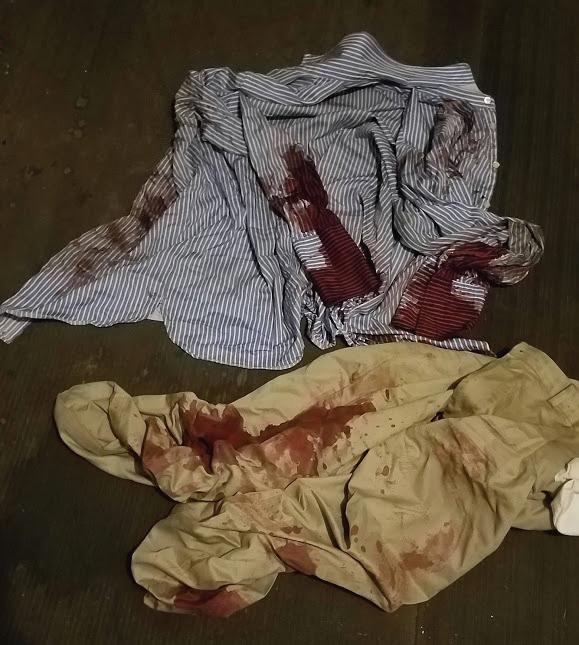
But they were undoubtedly on their way. More hands. More equipment.
“Keep the blood in the body!”
I made my decision.
I jammed my right knee hard and deep into my patients left groin. Pushing with all my might as if to to drive my knee through him into the bloody sidewalk.
“Aargh,” he complained. “That hurts!”
My solution was causing him more pain than being shot.
I told him that if it was to work, it would hurt, and to bear with it.
He seemed to take reassurance from my
CERTResponder.com 25
words, and, obviously feeling the loss of a lot of blood by that point and beginning to reel, he slumped back in acquiescence.
I jammed my right knee hard and deep into my patients left groin. Pushing with all my might as if to to drive my knee through him into the bloody sidewalk.
It seemed to work. I was blocking off the bleed from the wound. I kept talking and reassuring, and kneeling...
My world was very, very small. The two of us, locked together. And then, wonderfully, my world expanded. An ambulance had arrived, apparently slightly delayed due to access issues... and I had help.
After a very brief transition as the expert team from the Jersey City Medical Center took over care, I stood up and my world expanded once more.
Wow.
Unbeknownst to me, a crowd of maybe a hundred citizens, many visibly and audibly upset at seeing a shooting victim on the streets of Jersey City, had gathered, with perhaps thirty JCPD cops trying to keep them away from where medical care was being rendered and to allow ingress and egress for the JCMC team.
As I looked around, some of the surrounding members of the public caught my eye and immediately kindly expressed their thanks for what I had been doing. I had, pretty obviously, been getting stuck in for all I was worth to save a life, getting covered in someone else’s blood in the process.
And covered in blood I realized I was.
The cops about me who were not immediately engaged in the perimeter were looking at me curiously, and as I began to take in more, I realized why.
My forearms were both coated in blood, soaking my shirt, even though I had tried to push the sleeves back, out of the way, there were blood splatters on my chest and all over my pants, with blood especially where I had been kneeling in the pooled blood on the sidewalk and then especially into the blood in his groin.
I looked like a refugee from the ‘Texas Chainsaw Massacre’!
There and then, in the middle of the street I stripped off my shirt and held it one hand and then began walking back to my home.
Dropping the shirt by my front door, I banged on it, calling for my daughter.
She emerged, with slightly widened eyes, in the doorway.
“Darling,” said this bloody apparition. “I have got a little messy helping out across the street.”
“I can’t come in like this. Could you please go get me a
bowl of water with some liquid soap, and a roll of kitchen paper towel?”
And off she trotted and came back, composed and helpful, if still somewhat surprised.
I shall always be impressed by her composure that day as she helped me with my initial ‘decon’ before I went into the house for a more thorough cleansing.
A little later I went back out, cleaned and changed, and checked in with the JCPD officer in charge of the scene, passing on my name and contact details.
And that was that.
I gathered up my box, and headed out to give my speech on CERT. A little late, a little ‘spaced out’, but I wanted to get it done and not let down those who were expecting me.
Later that evening I learned that my patient had indeed survived.
I had done my job.
I had a visitor at my front door two days later. The victim’s nephew, with the victim’s mother and sister on his phone wishing to talk with me from the hospital, expressing their gratitude, telling me that the nurses had told them that without my fortuitous intervention, their loved one would be dead.
Yes. I got satisfaction from that win.
Not another ‘Judith’.
A life saved.
The following days had their unusual aspects.
Firstly, although I felt just fine, every night when I tried to go to sleep, my mind immediately filled with visions of copious quantities of bright red blood. This gradually faded.
Secondly, people kept stopping me in the street in my neighborhood saying “thank you,” to which I tended to mutter something along the lines of “I was just glad to be able to help.”
One kind neighbor even gave me a dozen bottles of beer in gratitude!
JCPD friends of mine said kind things about my intervention, and then word spread to City Hall and I got a call that they wanted to recognize my actions. Which a few weeks later in a ceremony they did.
26 CERT Responder Magazine

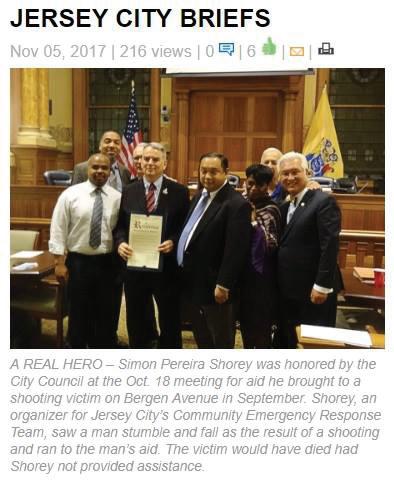
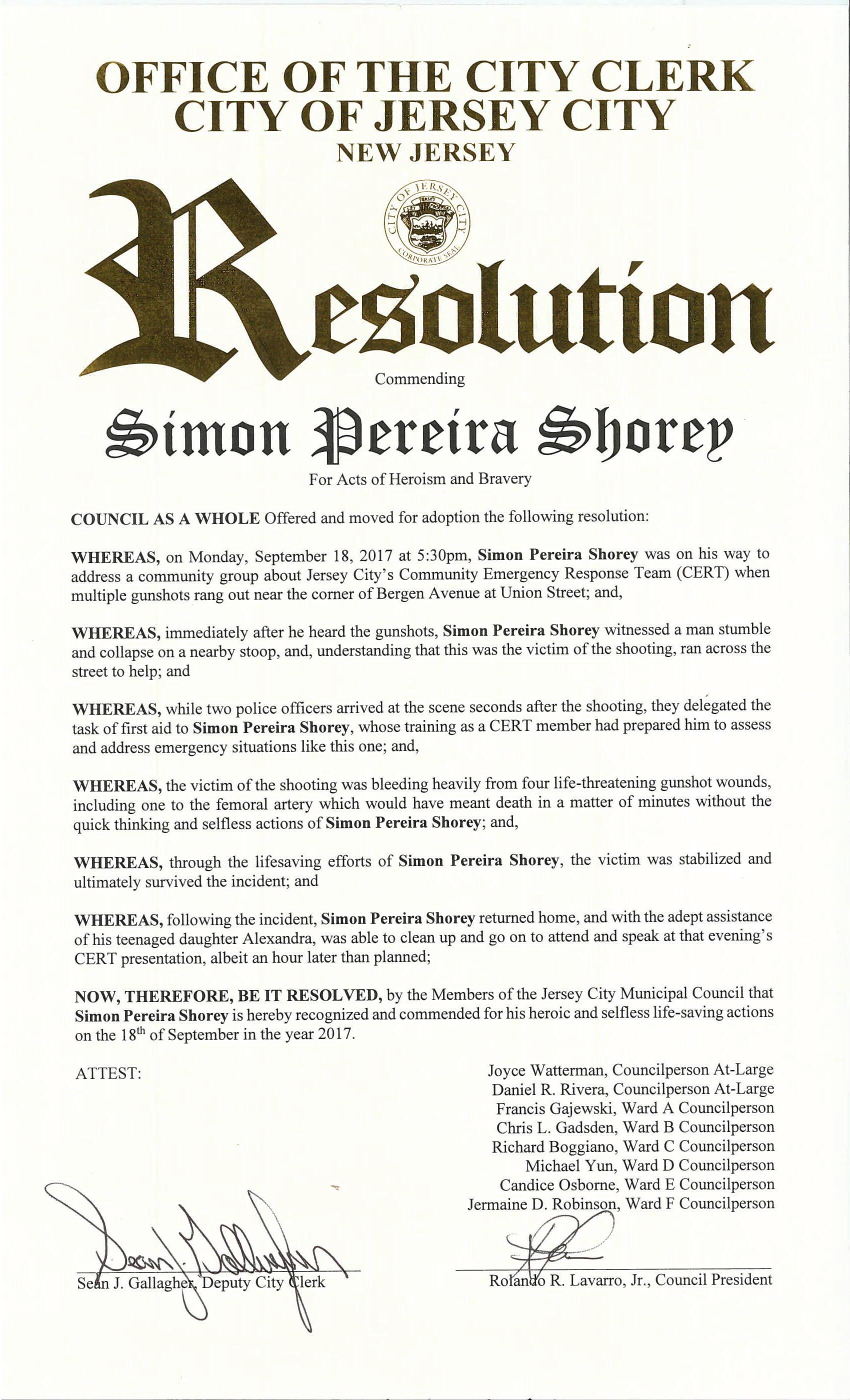
CERTResponder.com 27
I have always been a tad awkward about receiving awards and prizes, even once at school, totally embarrassed by the fuss, trying to sit in totally the wrong row in a non-existent empty seat, after receiving a prize in the morning assembly.
I knew and publicly acknowledged that although I may have done one useful thing, there are others who do this, putting themselves on the line, day in, day out, and it is they who are my heroes.
However, I realized several things.
I needed to talk about this event and ‘get it off my chest.’ I had gone from 0-100 mph in a matter of seconds, and I knew that my mind would take a while to settle.
Also, I was part of an effort to bring the national Stop The Bleed campaign, which seeks to encourage members of the public to learn life-saving pre-hospital trauma care techniques such as the use of tourniquets, to our city... and this was a useful exemplar, and, if it encouraged others, it could lead to the saving of more lives in the future.
So talking about it in public was good.
Which is, in large part, why I write about it all here.
We volunteer and paid, part-time and full-time, emergency responders are made in such a way that we want to be ready, be prepared, and, if an emergency occurs, be part of the solution, not part of the problem.
The time does indeed choose us, and we may well not be ‘on duty’ when we need to ‘step up.’
That is understood and the bargain we accept willingly.
Although pre-hospital trauma care is not a core part of CERT training, I am so glad that I made the effort to get the additional training, and would recommend it, to CERT volunteers and the general public alike. Remember, it is not just street shootings, it can be a car accident, an industrial injury, ... anything. And the injury could be to a loved one... You may be all the help that person has in those critical seconds. CERT

Simon’s EDC Trauma Kit
Two Imminent Threat Solutions EDC Slimline Pouches
One 4” Israeli Bandage, wrapped with Duct Tape on package
One QuikClot Sport Clotting Sponge
One Hy-Fin Chest Seal
One Emergency Blanket
One SWAT-T tourniquet
Simon joined the Jersey City CERT team in 2013, where he serves as Communications and Liaison Officer. Simon is also now the President of Resilient JC, Inc, a not for profit that seeks to support and augment disaster resilience and emergency response organizations and initiatives in his beloved Jersey City.
One of these initiatives is to bring the national Stop The Bleed campaign to Jersey City and provide free pre-hospital trauma care training to the public.
You can find the Jersey City CERT team at www.facebook.com/ groups/JerseyCityCERTPublic/, and Resilient JC at www.facebook. com/resilientjc.
One NPA tube
One pair nitrile gloves
One pair EMT shears
One CAT-T tourniquet in rigid Eleven-10 case
One Leatherman Wave multitool in pouch
28 CERT Responder Magazine
CERTResponderMagazine is searching for an aggressive and experienced salesperson to present our magazine to potential advertisers. This position is commission driven with incentives.
CERTResponderMagazine quickly becoming the go-to source for CERT groups to share stories, information, and training tips.
If you feel you have what it takes, please send your resume and contact information to Bob@certresponder.com



At SSM Health Saint Louis University Hospital how we treat a heart attack makes all the difference.
Upon a heart attack patient’s arrival, our team works quickly to restore blood flow to the occluded coronary artery.
The SSM Health Saint Louis University Hospital’s team of expert interventional cardiologists and surgeons were the first in the region to routinely utilize the Impella® device on high risk patients to treat the symptoms of cardiogenic shock by assisting the left ventricle during the cardiac cycle.

• An American College of Surgeons (ACS) designated Level 1 Trauma Center in Missouri and Illinois for nearly 30 years
• Provides high -level, exceptional care to more than 5,000 injured patients each year



www.ssmhealth.com/sluhospital

CERTResponder.com 29 Name:_____________________________________________________________________________________________________ Company:_________________________________________________________________________________________________ Address: ___________________________________________________________________________________________________ E-mail address: _______________________________________________Telephone: __________________________________ Payment Method: ❏ Check ❏ Charge: Credit Card Number:__________________________________________Expiration Date:_____________Security Code:_______ How did you hear about us? __________________________________________________________________________________ Subscribe Now! SUBSCRIBE ONLINE to CERT Responder: www.certresponder.com/subscribe MAIL PAYMENT OF $20 TO: CERT Responder Magazine | 629 Salt Lick Rd. | Saint Peters, MO 63376 CERT RESPONDER MAGAZINE JOIN OUR TEAM! GROUND FLOOR OPPORTUNITY
RIGHT PERSON!
FOR THE
Cardiogenic Shock Treatment
Michael Lim, MD, SLUCare interventional cardiologist
A Partnership that’s Meant to be! CERTand ARES
BY SAMANTHA HENLEY, EMERGENCY COORDINATOR OF THE BENTON COUNTY, MO AMATEUR RADIO EMERGENCY SERVICE (ARES)

My name is Samantha Henley. I was recently appointed Emergency Coordinator of the Benton County, MO Amateur Radio Emergency Service (ARES). My first foray into the CERT program involved learning about it from Benton County’s neighbor to the east, Camden County, MO. I was fascinated by the hands-on approach the group takes in training their members to prepare themselves, their families, and their neighbors for emergency situations.
I also found that our two groups, CERT and ARES, are very similar, and even overlap. Some of the areas our groups share are:
• the brightly-colored safety equipment due to identification mandates,
• the training suggested and offered through FEMA which targets some of the same areas (IS 100, 200, 700, and 800),
• the fact that many people are volunteers for both organizations, so on-site actions are uniform.
Even our procedures during emergencies are the same in some instances, such as:
• the need to take care of family first,
• the mandate to not self-deploy unless absolutely necessary,
• the requirement to put safety above all other concerns, and to make efforts to protect life and property if and when possible.
In addition, our training and activities for gaining field experience are almost identical. Both CERT and ARES groups can participate in crowd control for events in their area, such as bicycle relays, marathons, festivals, carnivals, and other such venues where large crowds of people gather. Both organizations
Pulling these two groups together and making their training uniform is not only ideal, but increasingly important.
can aid in search and rescue scenarios (training and actual events). CERT and ARES can man emergency shelters, providing not only extra hands, but also assessing needs, losses, and other essential information. Both can help with registration and assignments for spontaneous volunteers in emergencies, and they can provide support to the Emergency Operations Center (EOC) if they are overwhelmed.
Pulling these two groups together and making their training uniform is not only ideal, but increasingly important. As we have recently seen during the large-scale disasters in Texas, Florida, Puerto Rico, and California, communication is the key.
I was very interested to learn that several of the Camden County, MO CERT members recently acquired their amateur radio technician licenses, and were eager to learn about the radios and how to use them. These CERT members immediately grasped the importance of alternative communication for their field operations, and showed great
initiative in educating and preparing themselves with this ever-growing and evolving hobby.
For CERT teams and groups that don’t have their own amateur radio operators, it is ideal for them to reach out to their local ARES group and form a strong affiliation and partnership so they have access to licensed operators. Those ARES members can then be deployed to aid in communications between CERT teams and leadership, which would otherwise have little to no access to communications in true emergency situations.
Having knowledge of both organizations’ structures and operating procedures is beneficial to emergency management and local neighborhoods. There is great value and opportunity for CERT and ARES to work together, both currently and in the future! CERT

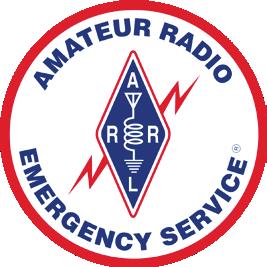
30 CERT Responder Magazine

Stress Inoculation Training and PUBLIC SAFETY DIVER SURVIVAL
BY MIKE REEVES, DIVE RESCUE INTERNATIONAL
Public safety diving is often a stressful and dangerous endeavor. Unknown circumstances of call outs, low (or no) visibility, pressure to perform in front of family or media, thermal stressors brought on due to environmental conditions or diver equipment, and diver fitness are just a few common, compounding stressors. Major underwater stressors to divers include entrapment, equipment failure, and loss of air. The best way to prepare fit divers to cope well for these uncertain circumstances is practice, practice, practice. But the best practice is to inoculate fit divers against major stressors in a controlled environment before these are encountered in the field. Preparation in this way creates resistance in the form of correct mind and body response to challenges divers face.
BASED ON THE WORK OF JOHN CARNEY AND FRED JACKSON


Of the six public safety diver fatalities in the USA for the years 2016-17, two occurred in search and recovery operations, and four occurred during training exercises. Of all the fatalities, none occurred during rescue operations. One diver suffered fatal injuries from a Delta P entrapment. One diver died as the result of panic that caused an emergency buoyant ascent and embolism following an out of air emergency. The root cause of the other four fatalities remains unknown, but we presume an underlying medical issue like a cardiac event or syncope brought on by diver stress likely led to the fatality. Stress causes divers increased cardiac loading, respiration, and blood pressure. As these increases prolong or intensify, mental and physical deficits begin which can lead to panic and severely negative outcomes.
Stress, in this context, can be understood as the imbalance between the demands placed on a person and that person’s ability to cope appropriately.
The big three results of effective training to counteract diver stress are high levels of diver cardiovascular fitness, competence, and confidence. Diver fitness is the first controllable variable of the situation. Public safety divers should be tested at least annually for fitness. The IADRS watermanship test (http://iadrs.org/wp- content/uploads/2015/08/ IADRS-Watermanship-Test-2011.pdf) helps to ensure that all divers who can pass are capable swimmers with adequate cardiovascular fitness. Dive Rescue International recommends public safety divers test to a fitness level of 13 MET, an equivalent pace to that of an 8- minute mile. Keep in mind that public safety divers are often required to surpass this fitness level for extended time pe-

riods. Pre-screening divers for underlying medical conditions which contraindicate diver fitness is also a must. The RSTC Medical Statement Participant Record (http://wrstc.com/downloads/10%20 -%20Medical%20Guidelines.pdf) is commonly used for this purpose and it, or a similar document, should always be used to pre-screen divers. Public safety divers come in many shapes and sizes. Many response teams (like the one I’m on) are volunteer units and members are often, to put it lightly, questionably physically fit. Overweight individuals or those with high body mass indices are at particular risk for cardiac events, while high cardiovascular fitness generally translates to better capability to handle stress.
Physical fitness and water skills competency can be maximized at the same time. Divers can swim laps with clenched fists or perform buddy tows. Swim laps with a small weight belt and see how quickly ability improves! Practicing basic scuba skills like regulator retrieval and buddy breathing keeps divers sharp, but stress inoculation training is the strongest insurance against catastrophic results.
Stress, in this context, can be understood as the imbalance between the demands placed on a person and that person’s ability to cope appropriately. When stressed, the human body automatically activates the sympathetic nervous system, releasing neural signaling molecules that increase heart rate, respiration rate, and blood pressure. Stress gets you going – looking for solutions, but as continued or extreme stress begins to cause panic, cognition and motor skills rapidly decrease.
Underwater accidents occur. That is a fact. In these situations which run the gambit from entrapment to out of air emergencies to equipment failures (or all simultaneously), proper, fast, and effective response by both the diver and the diver’s support personnel are imperative. Diver’s self rescue response is the most crucial component for positive outcomes when faced with these events. Many times, public safety divers enter the water already stressed. They’re excited, nervous, they have maybe been lugging gear from the command

32 CERT Responder Magazine

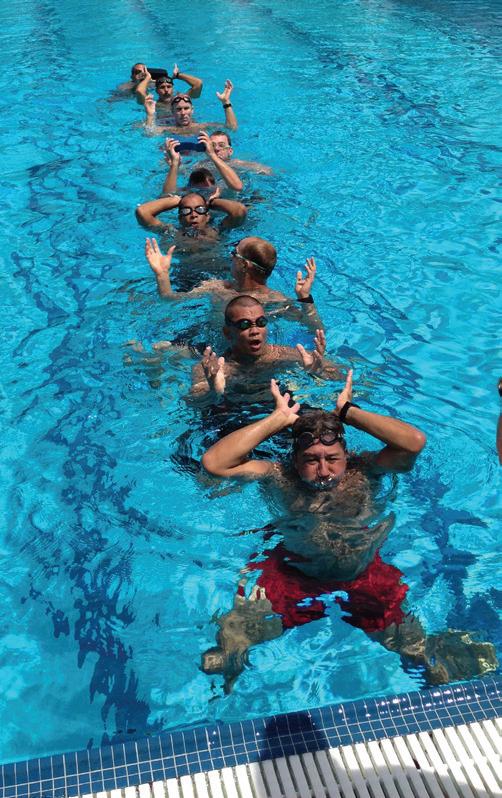

post to the shore, prepping it, donning it. They’re listening to instruction for the operation and preparing to do their best. These physical and mental stressors can preload divers for negative outcomes in underwater emergencies.
The effect of stress on a person follows a pattern that helps orchestrate training procedures. When a stressor is introduced, the body’s reaction is to become alarmed and release chemicals which in the short term should help a person to cope. Next comes a resistance phase where a person either copes and adapts to the stressor or is overwhelmed by it. Finally, there is resolution in which the individual’s response to the stressor is successful or their coping mechanisms become depleted. As coping mechanisms begin to fall behind the stress curve, panic sets in. As panic increases, tunnel vision and irrational thoughts may occur, which are the most dangerous precursors to negative outcomes in challenging underwater emergency situations. Panic requires outside intervention for a positive outcome to result.
It is possible to notice many signs of stress in divers which may allow teams to reorganize diver lineups or organizational plans. On shore, behavior abnormal for the individual is the best clue. Is the diver withdrawn and quiet when normally gregarious? Are they moving quickly or slowly compared to what is normal for them? On surface and during descent, stressed divers may be high treading or white knuckle their tethers. They may descend very slowly or be reluctant to descend at all. At depth they may keep a vertical position and on ascent they may come up much too quickly. Diver respirations should be monitored as an indication to their mental and physical state. It is important that all teams have a “no dive” policy that states any diver can refuse any dive and that any team member can call an immediate halt to operations based on safety concerns. So how should we best lower the effects of stress to divers and help insure panic is kept at bay? Diver stress inoculation training is the best answer. There are many components to completing effective diver stress inoculation training. Coursework should classify the causes and characteristics of diver stress,
Quality training saves lives and is the best insulation against diver panic.

identify pre-dive and dive stress, conceptualize the behavioral and psychological signs of stress, define the stages of stress, recognize factors leading to panic, and relate the coping styles common in these situations. In-water practice is the most crucial component of successful training. Once divers understand the cause and effect of stress and the real possibility of panic, divers can prepare to face the challenges of in-water jam-ups, and practice them in live iterations.
Public safety diver stress inoculation in-water training must be carefully planned and controlled. It is possible for training to have either a too weak or too strong stress component. Training officers must be able to align divers to stressors in an environment that can be modulated. The intensity of the stressor must be severe enough to produce in the diver an intense response, but must not overwhelm the diver’s capacity to handle it. Training tuned to the diver like this greatly improves four main goals: the ability of divers to recognize and analyze problems they face, to effect change to improve their situation, to remain calm and in control, and to increase confidence in their abilities. In-water training must also be realistic and appropriate. Black out diving, entanglement mitigation, out of air emergencies, and deployment of safety divers must all be practiced, and practiced in ways that build confidence and capability.
Quality training saves lives and is the best insulation against diver panic. Every public safety diver suffers stress, but each diver’s capability to cope with the stressors placed on them can be maximized through the big 3 training ideas: Increase cardiovascular fitness, practice basic skills, and inoculate against the stress of underwater emergencies. CERT
Dive Rescue International offers more than 30 public safety diver training classes including Public Safety Diver Survival. 800-248-3483.
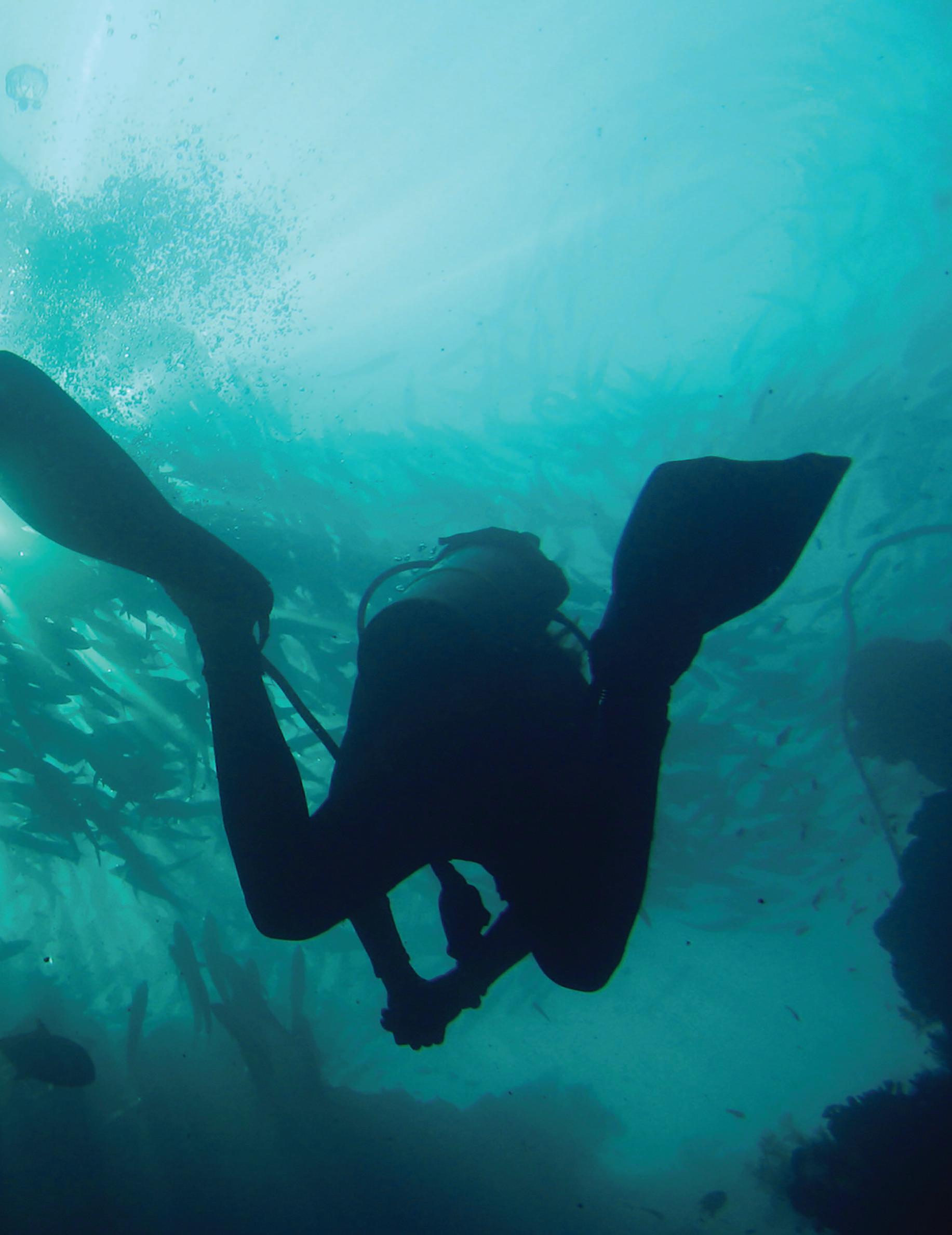
CERTResponder.com 33



34 CERT Responder Magazine CERT MARKETPLACE AGOOD Graphic Design & Creative Direction • Magazines • Publications • Newsletters • Brochures • Advertising • Much More 314.275.2208 shermanstudios.com IS HARD TO FIND Fran Sherman For Design You’ve just found one. tiger@tigertravel.com 314-968-4410 800-875-4410 7967 Big Bend Blvd. Webster Groves, MO 63119 Making Dreams Come True since 1972 TIGER TRAVEL SERVICE Advertise Here Contact Us Today! www.certresponder.com/advertise
Our Team Works For Your Team
ProPac CERT Kits
CERT Kits by ProPac maintain the original standards established by the City of Los Angeles. A concerted focus has gone into making our components stronger, more durable and more efficient. ProPac's current kits are the product of over 20 years of input from CERT responders in the field.
• Kits for every need and any budget
• Custom logo imprints available to ID your team
• Custom kits can be built to your specs
• Quantity discounts available
• Government pricing
• Manufacturer direct quality control
• On Duty® American made 4-in-1 spark-proof tools
• ProLight brand light sticks individually sealed and shelf dated
• Safety vest options: 5-point breakaway design in Neon Class II rated or Green. Include CERT logo with custom ID imprint available
• Flashlights are industrial grade LED-50 hour runtime, Rayovac HD batteries included.
The ProPac brand backpack
– Carry it
to extremes.
• Nylon canvas shell: far more resistant to abrasion, lighter and more flexible than Polyester, it’s woven with 600 Denier cord for added strength.
• Padded carry handle
• Luggage Style Tag holds ID Card
• Reflective stripe for added safety
• Curved-over-the-top zippers run fast and easy

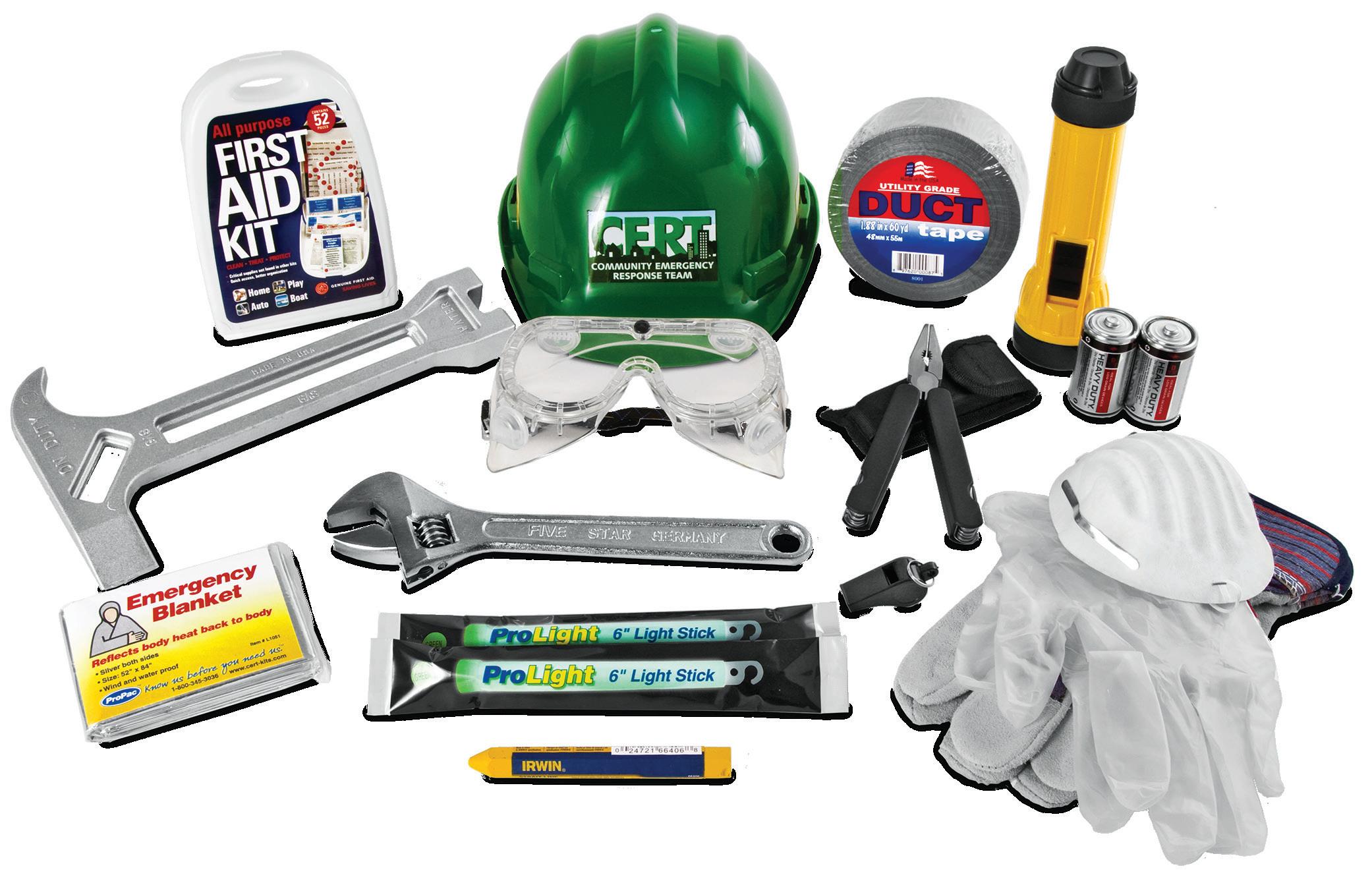
• Oversized fabric zipper pulls - Easy to grab with gloves on
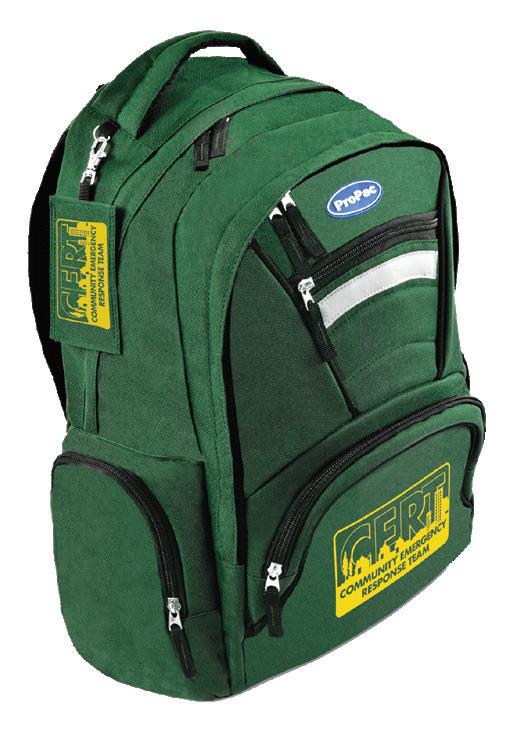
• Heavy duty SBS #5 coil zippers hold tight, run smooth
• CERT imprints included, custom logos available
• Measurements: 11" W x 16" H x 8" D - Weight: 1.25 lb
• Straps and back feature 1/2" thick padding for long lasting comfort
• Padded compartments protect and organize gear.
• Waist strap for added comfort and stability
• Mesh pocket for quick access (bottle sold separately)

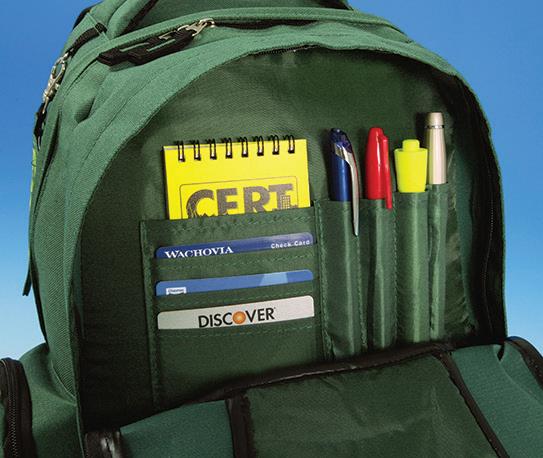
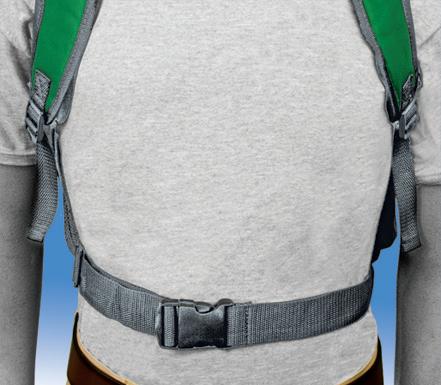
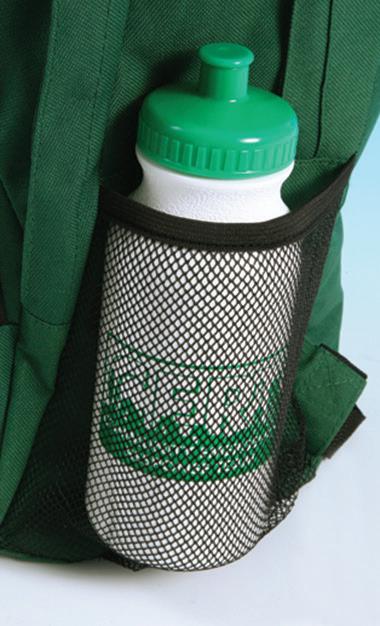
No matter how big or small your response call may be, ProPac can outfit your team with precise and reliable equipment, tools and supplies for any emergency response. It’s vital. It’s dependable. It’s what you need.
1-800-345-3036 propacusa.com Get
To Get The Job Done!
Your CERT Equipment
Items
in pockets not included
Pro3 CERT Kit shown
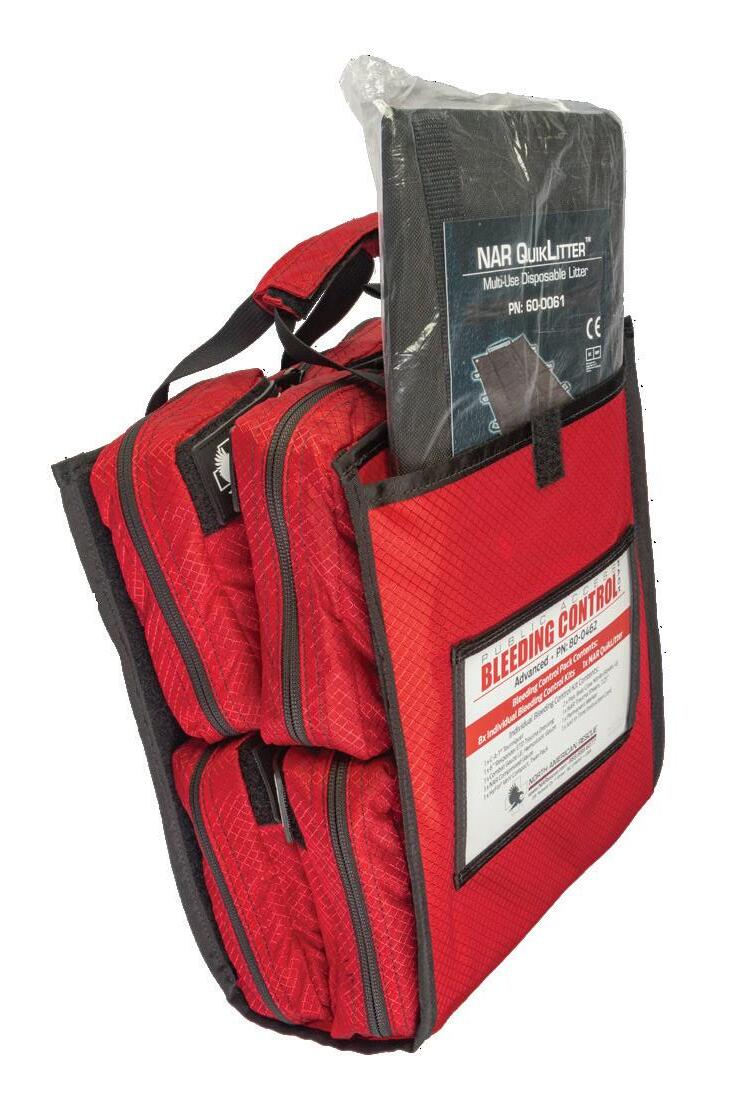

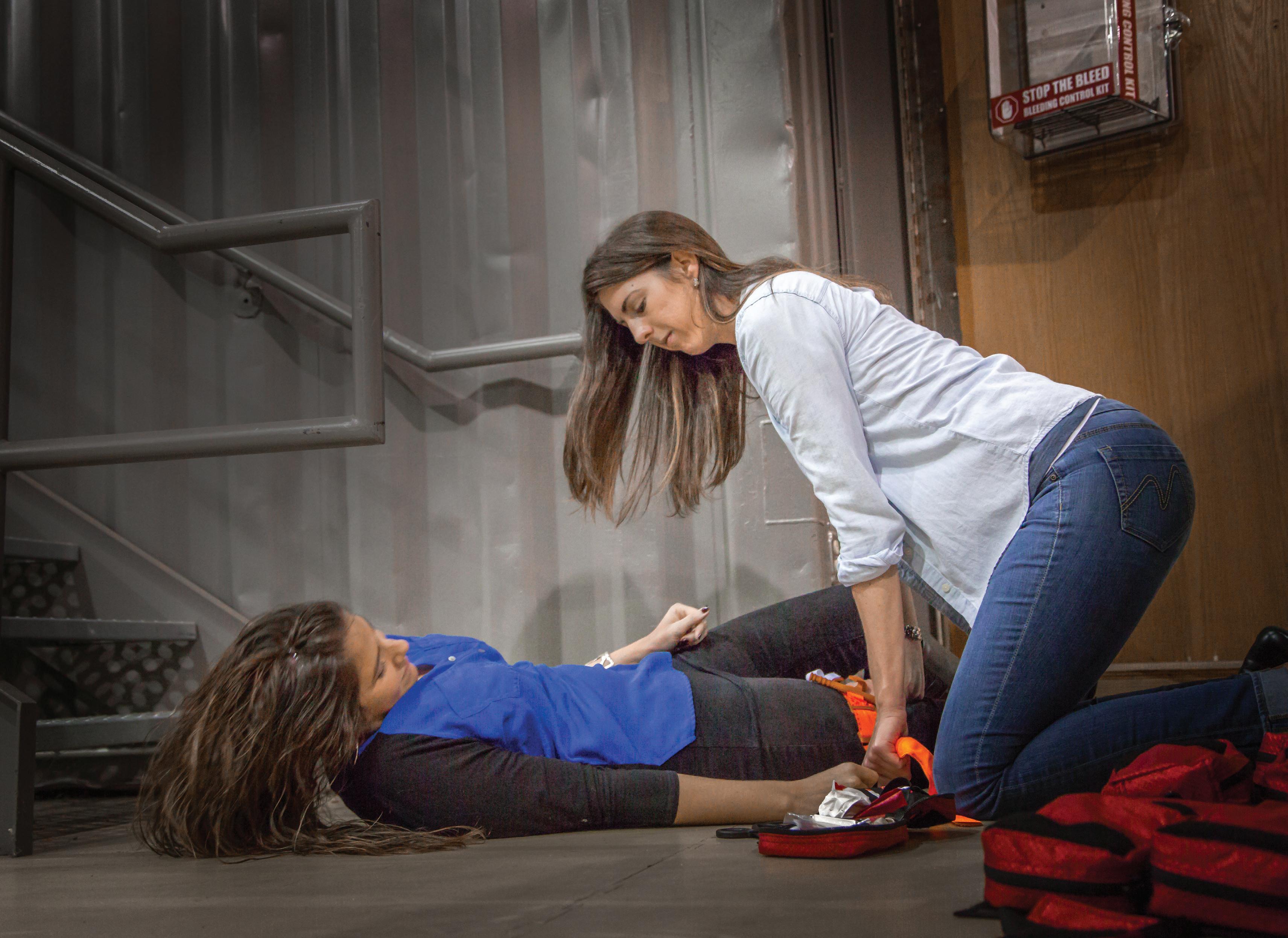
Lifesaving modular solutions designed to equip bystanders & initial first responders with essential medical gear to take immediate action in life-threatening emergencies. Explore all your options at NARescue.com COMMUNITY PREPAREDNESS Public Access Bleeding Control Kits Individual & 8-Packs Be more than a bystander... Bleeding Stops Here! Instructors & Students together for a DAY of TRAINING Free of charge. March 31, 2018 National STOP the BLEED Day REV020918





























































































